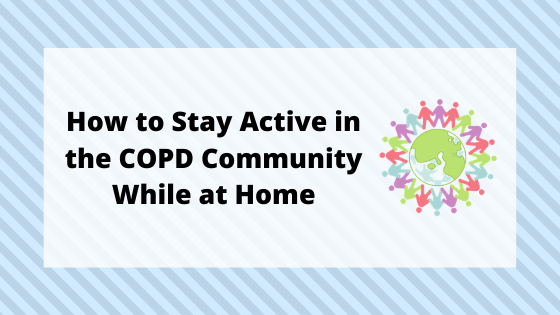
At this point in time, the vast majority of Americans are under some type of quarantine. Whether you’re young or old, healthy or not, it’s important to follow these guidelines because they will help prevent the spread of the novel coronavirus (COVID-19). In addition to these measures, it’s important to follow the updated instructions given to us by the World Health Organization (WHO), this includes:
- Washing your hands thoroughly and regularly throughout the day
- Avoid touching your face
- Maintain at least 6 feet of distance between you and the closest person
- Cough or sneeze into your arm or a Kleenex
-
Always stay home if you’re feeling sick

While it hasn’t been officially advised by the WHO, we’d also like to add face masks to this list. There’s been a lot of debate about whether or not medical or non-medical face masks are effective in preventing COVID-19, but the general consensus seems to be that using some type of face covering can be effective in preventing the spread of germs. However, people shouldn’t get a false sense of security from wearing a mask, because guidelines like social distancing are still very important.
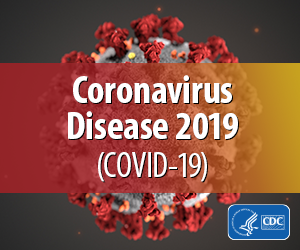
If you remember from last week, we gave you a complete guide for dealing with COVID-19 if you’re a COPD patient and a guide for staying active while you’re at home. These are still great resources for anyone who’s stuck at home and wants to educate themselves on staying healthy. However, one issue we haven’t touched on yet is the way that COPD communities have been affected by the virus. Read on as we discuss more important information for COPD to know during these difficult times.
{{cta('fa8abc2a-1e88-4fa3-82fd-1cb5b9ed43b2','justifycenter')}}
The Importance of COPD Communities
A COPD community is a place where people with COPD and other respiratory conditions can support each other and raise awareness for their illness. This could be a group that’s put together by a professional organization such as the COPD Foundation or the American Lung Association or it could be an independent event held by COPD advocates.

Fortunately, due to modern technology, it’s easier than ever to maintain COPD communities without actually meeting in person. It’s possible to maintain relationships with other patients entirely over the internet through things like discussion forums, video chat rooms, and more. The following are some of the reasons it’s so important to maintain these relationships even during quarantine.
COPD Advocacy Shouldn’t Stop During a Pandemic
Possibly one of the most important functions of COPD communities is to advocate for people struggling with health conditions. We discussed this topic in detail in a previous post, but we’ll provide you with a condensed version here for convenience. According to the Correlation European Harm Reduction Network, advocacy has four different functions:

- To help someone maintain control over their lives and promote their rights
- Promote inclusion of a wide spectrum of people and ensure that isolated individuals are able to get the help they need
- Empower people with the ability to speak for themselves and their own needs while speaking on behalf of others
- Provide people with an outlet to educate and better themselves and to clarify misunderstandings about their condition
Another important thing to note about advocacy is that it doesn’t just have to be done by people who actually have COPD. In order to have a wider reaching impact, advocacy should be embraced by friends, family, and loved ones in order to make a bigger impact on the community and the world. What’s more, advocacy isn’t something that should halt once a pandemic like COVID-19 starts. In order for advocacy to continue, COPD communities need to remain intact and stay as active as possible despite the circumstances.
Communities Are Often Therapeutic
Another reason COPD communities are important is because they are often therapeutic. Oftentimes, insecurities, anxieties, or otherwise negative thoughts that are brought on by chronic lung disease can be cured with simple human interaction. This is similar to how someone with a drug addiction or mental health condition may join a rehabilitation program in order to speak and interact with likeminded people.

Giving and Receiving Medical Advice
Managing a complex condition like chronic obstructive pulmonary disease can be challenging. Whether you need advice on the treatment plan that you’ve already been prescribed or you’re searching for alternative treatments for COPD, there’s nobody better to talk to than someone who has experienced the same symptoms. When you consult the COPD community for medical advice, you’re sure to receive loads of great advice from people who truly want to help and who understand what you’re going through.

At the end of the day, it’s just as important to give advice as it is to receive it. If you think back on all the experiences you’ve had coping with COPD, you can likely think of one or more pieces of advice you could provide the community with. Just make sure you’re not giving advice about something that you’ve never dealt with or have no experience with. When receiving advice, it’s also important to consult your doctor before making any major changes to your COPD treatment plan.
{{cta('b59df0c1-c4de-47a8-8e1c-0d33d4b414aa','justifycenter')}}
Online COPD Support Forums
An internet forum is a place where people can exchange information on a given topic through the internet. One of the great things about internet forums is that they often archive their information, so if you find something useful, you can refer back to it many months or even years after you found it. Simply bookmark it using your web browser and you can return to the page anytime you want.
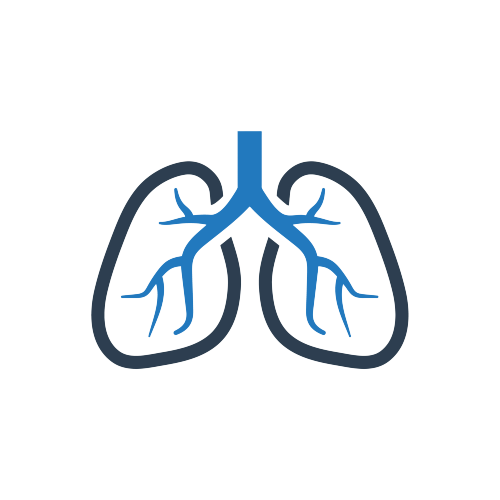
Another reason to use online COPD support forums is that you can contribute as much or as little as you choose. Rather than having to commit to attending specific events, you can simply read through various forums and respond whenever you have the time. They also tend to be fairly active, so if you ask a question you should get a reply pretty quickly. Read below for a list of internet forums that all COPD patients should know about.
The COPD Foundation

The COPD Foundation is a nonprofit COPD advocacy group founded in 2004. Its mission is to help develop innovations that will improve the lives of COPD patients all across the world. Scientific research, education, and awareness are their primary means of accomplishing this, and they’ve developed their own approach to doing this called COPD360.
COPD360 is designed to enable partnerships between healthcare professionals, patients, caretakers, academic institutions, and researchers. By doing so, everyone will be better equipped to prevent COPD and treat it more effectively. One of the services the COPD Foundation offers specifically for COPD patients is called COPD360 Social. This platform aims to connect patients and educate them about their treatment options. It also provides a supportive environment for caretakers and family members who are looking to share stories, information, and advice.
The best part about signing up for a membership is that it’s entirely free and it will instantly connect you to thousands of other people around the world. All you will have to do is give them some basic information and then you can log in and start posting questions or reading through previous forums. One cool feature of this service is the badge system. The more someone answers questions in a helpful way and are upvoted, their experience will be displayed in their profile. This way, you’ll know if you’re receiving information from a well-respected member of the community or not.
The American Lung Association

The American Lung Association is one of the oldest and largest lung health advocacy groups. Their number one mission is to save lives by improving lung health and preventing lung disease. While they tend to focus on defeating lung cancer, they also champion clean air, and creating a tobacco-free future. Just recently, the American Lung Association announced a $25 million fund that will be used to award research grants for preventative research, vaccines, antivirals, and to help with future outbreak preparedness.
Similar to the COPD Foundation, The American Lung Foundation has a forum where you can ask and answer questions, communicate with other respiratory patients, and much more. Their forum is hosted through Inspire.com, a site designed to connect people with various health conditions across the world to provide support and medical advice. The great part about Inspire is that there’s a mobile application which will allow you to connect to the service no matter where you are in the world, as long as you have an internet connection.
COPD.net
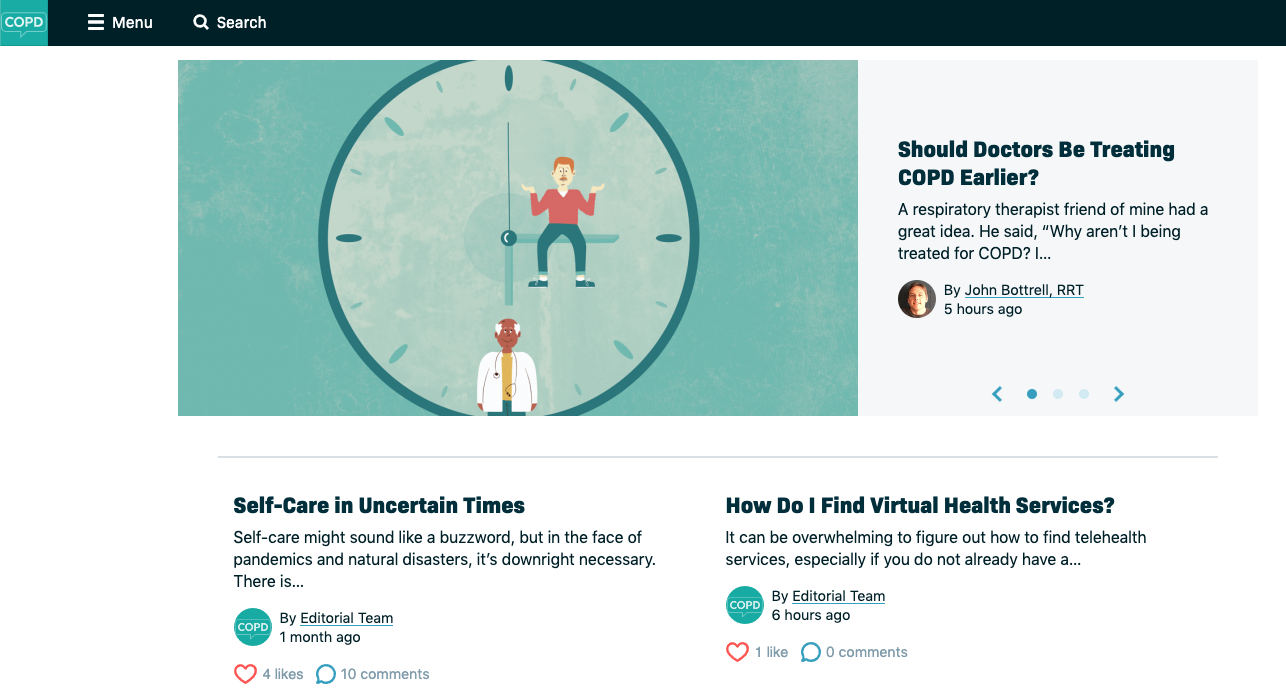
Whether you’re a COPD patient or caretaker, COPD.net aims to empower, educate, and equip you with the tools you need to manage COPD symptoms and live a better life. They also offer featured articles written by prominent physicians, advocates, or other health experts. In general, COPD.net is a great resource for anyone who wants to learn about COPD from more than one perspective. Their blogs and articles will help you see your condition in a new light and also give you resources to cope with the mental and psychological effects more easily.
COPD.net’s Help Center is hosted by Health Union, a social media platform that was created to leverage technology in a way that enables people with chronic conditions to have more meaningful, productive, and impactful connections through the internet. You can get started by following the link to the COPD.net Help Center and reading through the instructions. You’ll learn a bit about the history of Health Union and its purpose. You’ll receive a weekly e-newsletter, surveys and research opportunities, and you’ll gain access to the Q&A tool.
Social Media
Aside from organizations which run communities of COPD patients and caregivers, you can also find many different COPD communities through social media sites like Facebook, YouTube, or Twitter. The organizations listed above all have social media pages that you can follow and receive updates from, but you can also join independently run Facebook pages. To find a COPD group on Facebook, simply log in and click “groups” at the top of the page. Then you can search “COPD” and you should see a list of results. Find one that looks interesting then click “join group.” You may be required to answer several questions before being admitted into the group.
![]()
One of the best parts about using social media sites like Facebook to stay connected during the pandemic is that you’ll have a lot of free reign when it comes to how you interact with people. Facebook allows you to post photos, videos, and links which may not be allowed in other more heavily moderated forums. You can also join groups that are specific to your needs. So, for example, if you want to learn more about alternative treatments for COPD, you may be able to find a group that covers that specific topic. This way, it’s much easier to meet like minded people.

The downside to staying connected through social media groups is that you’ll have to be extra cautious about verifying the validity of the information you read. While moderates often try to prevent false information or spam from being posted in their groups, it’s unlikely that they will be able to stop everything from getting through. Facebook also has policies that makes it harder for potential spammers to enter groups, but that only goes so far. As a COPD patient or caregiver, it should be your top priority to verify everything you read with your doctor before actually applying it to your treatment program.
Call or Video Call a Friend
Sometimes, a “community” doesn’t necessarily mean a large group of people. In many cases, a small gathering of your closest friends is just enough to keep the conversation going. Fortunately, we’re lucky enough to live in a time when staying connected is easier than ever. Computer applications like Skype and Zoom have connected millions of people across the world during the COVID-19 pandemic and they can do the same for the COPD community. Here are a few helpful tips to get you started with video conferencing.

- Organize a group of people who will all be able to contribute and benefit from conversations about COPD and staying safe during the COVID-19 pandemic.
- Create a set time to meet each week. While most people are staying home, that doesn’t mean they aren’t busy. This will also help make sure everyone is able to participate.
- Have a set topic that you discuss each week. Although it’s great to freestyle and discuss things on the fly, it’s easier to cover more topics when you think them up beforehand.
- Last but certainly not least, don’t be afraid to add more people to the mix. It never hurts to hear the perspectives of other people like caretakers, health professionals, or researchers if they are able to make themselves available.
We’ve talked a lot in the past about telehealth technology and how it’s shaping the way we approach healthcare. The current situation with COVID-19 has truly revealed how important it is to focus on this concept moving forward. Just ten or twenty years ago, it would’ve been impossible to accomplish what doctors can today through telecommunications and other medical advancements.
Take Part in a Clinical Trial
As you can imagine, this is a very busy time for researchers all across the country. Everyone is wanting to learn more about COVID-19 and when we can expect to see a vaccination. But the truth is, this isn’t possible without many years of testing. Experts say it will take 12 to 18 months at the very least, but the more support researchers have, the smoother the process will go.
![]()
As a COPD patient, you have a unique opportunity that many people don’t have. According to The Lancet, a journal that reports on medical findings, well over 500 clinical trials have been registered at both international and national clinical trial registry sites as of April 21, 2020. And we’ll likely see more arise as we learn more about the novel coronavirus. On this site, you’ll find a very helpful updated list of all of the clinical trials currently underway for COVID-19. You can refine your search by “recruiting” and “not yet recruiting” as well as age range and a number of other factors. Simply click on one that interests you to find the details and contact information.

The thing about clinical trials is that they require the participation of people from all different demographics. This includes young people, old people, healthy people, and chronically ill people. While we already know that older people with chronic respiratory illness are more susceptible to COVID-19, ongoing trials will reveal what treatment methods are effective in combating the virus as well as how we can protect those who are most vulnerable. If you want to stay involved in the community in the following months and years, this would be a great way to do so!
Conclusion
With all that’s going on in the world today, especially pertaining to the coronavirus and its effects, it’s important that we stay connected and communicate openly. This is even more important for older adults with chronic conditions like COPD, lung cancer, and diabetes, because these people are at the greatest risk of not only contracting COVID-19, but suffering severe symptoms from it as well.
Maintaining COPD communities during the pandemic has a number of benefits. Advocacy requires a great deal of communication which can be used to make politicians and community leaders aware of COPD patients and their needs. What’s more, by maintaining open lines of communications, COPD patients may be able to limit the stress and anxiety that comes with spending so much time at home.
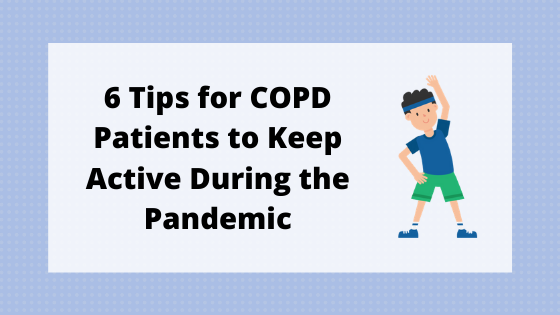
The past several months have been challenging for many people across the world. With the outbreak of the novel coronavirus (COVID-19), most of us are filled with uncertainty about our health and financial well-being. While many people have lost their jobs, older adults, especially those with chronic health conditions like COPD or diabetes, have had to drastically adjust their lifestyle to avoid getting sick.
Last week, we told you seven things that COPD patients need to know about COVID-19. This guide is a great place to start if you want to know the best way to deal with the coronavirus as a COPD patient. In it, you’ll find information about what exactly the new virus is and why it’s so important for respiratory patients to take extra precautions when it comes to social distancing, sanitation, and sheltering in place.

One important point we discussed in this article was staying active. Despite most of us being in our homes all day and night, exercise remains a key part of treating respiratory conditions like chronic obstructive pulmonary disease. However, contrary to popular belief, you don’t necessarily need to get out of your house in order to exercise effectively.
In this post, we’ll take a look at six tips you should know before exercising at home. While these can act as guidelines to get you started, it’s strongly recommended that you first speak with your doctor or pulmonologist to learn what exercise routines are best for you. In the meantime, if you have any questions for us, don’t hesitate to leave them in the comment section at the bottom of the page or fill out the contact form at the side of the page.
{{cta('43b79c5e-6bd6-4f02-ac27-2d038d20c146','justifycenter')}}
Practice Good Posture
Good posture is paramount not only for exercising, but for managing COPD symptoms in general. Posture simply means the way that you hold and carry your body throughout the day. Someone with bad posture may experience back pain, fatigue, or other adverse symptoms, while someone with good posture will avoid any unnecessary and excessive strain on their body.
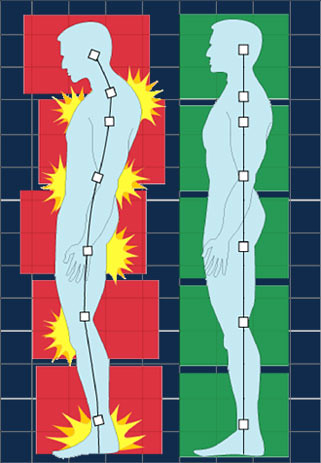
As we age, it becomes increasingly difficult to maintain a good posture. When we become weaker, we begin to reinforce bad habits that we’ve developed over the course of our life, so late adulthood is a great time to reevaluate the way we sit, stand, and even walk. According to this Harvard report, poor posture can lead to muscle weakness, spasms, and put stress on your neck and lower back. Over time, it can even impair your ability to exercise which is the very goal you’re trying to accomplish in the first place.
Fixing a bad posture is something that you’ll have to actively work at and it’s not something you can necessarily fix overnight. However, by taking things one step at a time, you’ll be able to reverse bad habits that you’ve developed over the course of your life.
Forward Neck
The first sign of incorrect posture is a forward neck. This happens when someone pushes their head and neck forward away from their center of gravity and usually develops in people who use their computer frequently. This also occurs more commonly in people who are hard of hearing because they find themselves leaning forward to hear a sound more acutely.
The key to fixing a forward neck posture is to strengthen your upper thoracic extensors. These are the muscles that help keep your head aligned with your shoulders. One way to do this is with chin tucks. Each morning you wake up, roll your shoulders back and drop them. Then press your chin gently backwards. Repeat this several times a day and you’ll notice your neck muscles getting stronger.

Another way to fix this posture is to change the way you sit at a desk. If you use a computer or laptop frequently, try raising it up so that it’s at eye level. If it’s below eye level, you may be tempted to bend over to view the screen. You can also try using a standing desk or using a chair that has support all the way up your back.
Postural Kyphosis
Also known as a “hunched” back, postural kyphosis is a leading cause of back pain, stress, and most relevant to COPD patients, breathing difficulties. While so many people struggle with a hunched back, it's very unnatural for our bodies to be in this position. It causes an enormous amount of stress in the spine, pinches nerves in the back, and compresses the lungs preventing us from getting a full breath.
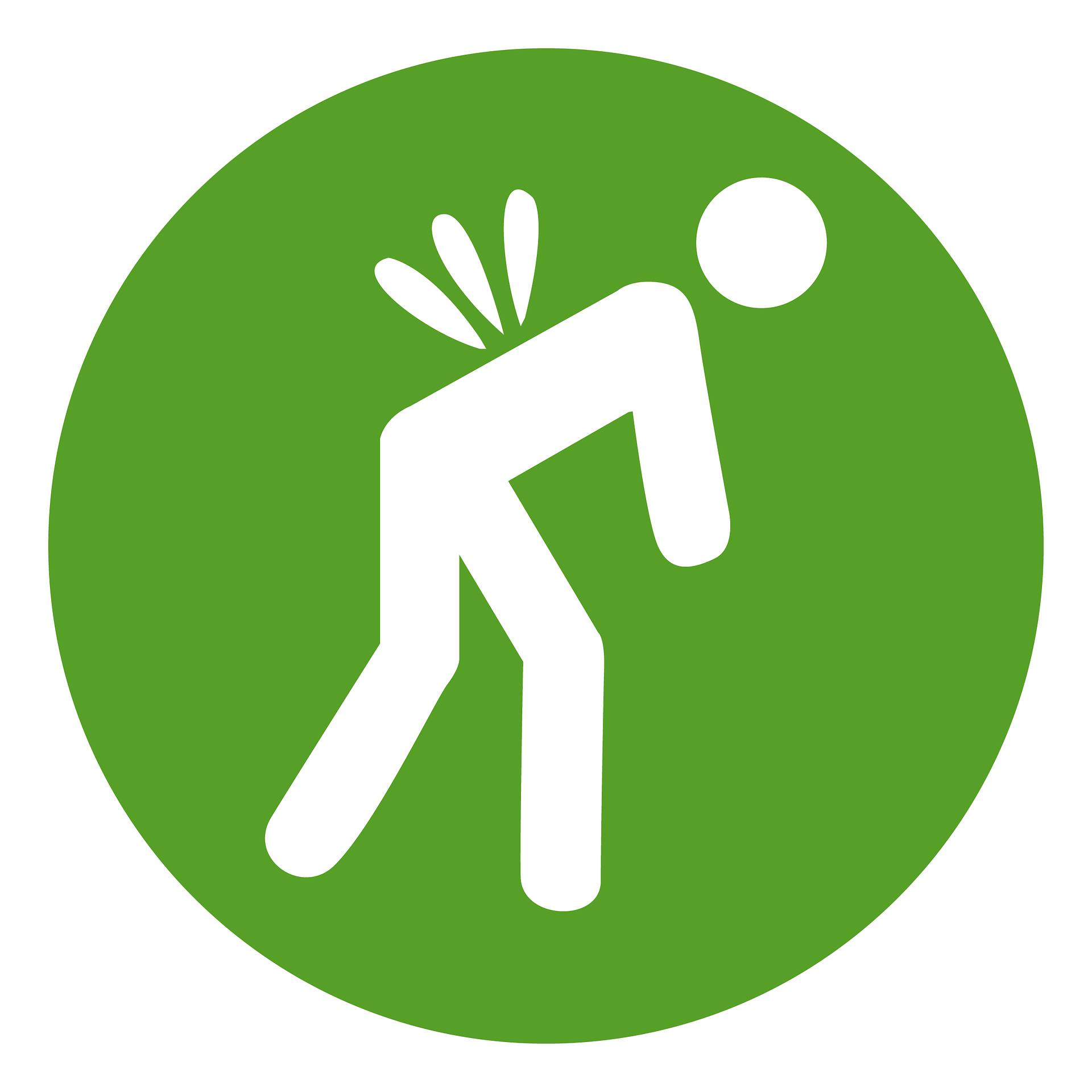
One simple way to fix this is to stand with your back against the wall. Ensure that your heels are as close to the wall as possible and hold your head up straight looking forward. Drop your shoulders and let them roll backward. You should feel your spine center and start to rest in a more natural position. If you notice your back starting to slouch throughout the day, practice this exercise to reset your posture.
Standing and Walking Posture
Unfortunately, the aforementioned tips won’t do you much good if you don’t apply them to the way you stand and walk as well. As we age, standing and walking can become difficult enough as it is due to conditions like osteoporosis or muscle weakness, so a poor posture will only make this more difficult. In general, the same rules apply as when you’re sitting like a straight back and your head being aligned over your shoulders, however, there are some additional points to take note of.
![]()
First and foremost, you should be using decent shoes that have good arch support and shock absorption. Tennis shoes are typically the best option but other types of shoes are an option if they follow these guidelines. Another way to ensure you have a great posture while walking is to act like there are balloons attached to your head and chest while your shoulders are able to drop backwards freely. This may feel awkward at first, but eventually you’ll develop a natural way of doing it.
Another way people develop poor posture while walking is if they carry heavy objects like backpacks, purses, or oxygen concentrators. While it’s recommended that older adults avoid carrying heavy objects, if you need to, make sure you’re doing it properly. If you use a backpack, make sure the straps are pulled tight enough that the majority of the weight is held as closely to your back as possible. Doing so will ensure that you don’t experience any unnecessary back strain.

If you’re a COPD patient who needs to carry oxygen with you while you’re out and about, it’s best to find a carrying method that won’t hurt your back. Portable oxygen tanks can weigh over 8 pounds and continuous flow oxygen concentrators can weigh over 15 pounds, so generally you’ll need to use a rolling cart or carry them in a specially designed backpack. Pulse dose oxygen concentrators, on the other hand, are much lighter (under 5 pounds) and can be carried on one shoulder without ruining your posture. Check out this great guide for finding the best portable oxygen concentrator for seniors or fill out the contact form at the side of the page and we’ll get back with you.
Practice Breathing Exercises
Once you’ve fixed your posture, practicing breathing exercises is a great next step towards staying active during the pandemic. As a COPD patient, breathing correctly is very important, and not unlike posture, it is possible to develop bad breathing habits throughout your life. We’ve discussed this topic in depth in a previous post, but if you want a condensed version, we’ll cover it here.
One of the biggest problems COPD patients face is something called “shallow” or “chest” breathing. This is a type of breathing that is primarily done through the use of intercostal muscles the muscles found in between your rib cage. This is a problem because it limits your air intake and it can be painful or difficult for someone with a chronic lung disease because it emphasizes the use of chest muscles which are often weak in these patients.

Alternatively, COPD patients should practice what’s called “deep” or “diaphragmatic” breathing. As opposed to using chest muscles, this type of breathing uses the sheet of muscle below the lungs called the diaphragm. Learning to master this type of breathing can be difficult, but it’s well worth it for someone who wants to breath more comfortably and freely.
Pursed Lips Breathing
Pursed lips breathing is a breathing exercise that’s used to make your breaths slower and more intentional. It’s also designed to give you more control which is ideal for people who want to improve their athletic performance or cope more effectively with respiratory ailments like cystic fibrosis or chronic obstructive pulmonary disease.
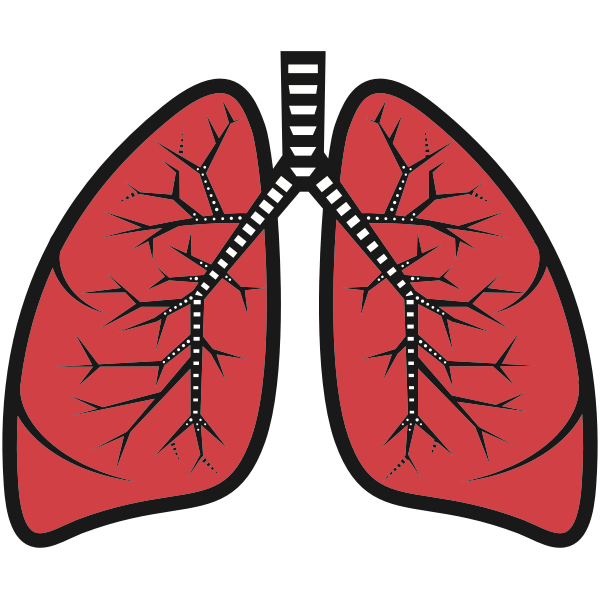
To practice pursed lips breathing, lie on your back or sit with your back straight. Drop your shoulders and try to eliminate tension within the body as much as possible. Inhale through your nose for 2 seconds letting your lungs fill with air. Then, purse your lips and blow out slowly for about 4 seconds. Continue to practice this exercise several times each day.
While this may seem like a rather simple and ineffective breathing exercise, studies have shown that it can significantly improve exercise tolerance, arterial oxygen, and breathing patterns, especially in those with declining lung function. This study even found that pursed lip breathing can reduce dynamic hyperinflation in patients with low peak expiratory flow (PEF). Another reason to practice pursed lips breathing is that it can calm your nerves and make you more relaxed. This can help relieve stress and anxiety which are common among COPD patients.
Coordinated Breathing
Breathing is part of what’s called the autonomic nervous system. What this means is that it’s a function that your body does without you having to think about it. Your heart rate, blinking, and your breathing rate are all controlled by the autonomic nervous system. Coordinated breathing refers to breathing that you consciously try to control while you’re exercising.
Whenever you lift a heavy object or do some type of strenuous exercise, you may notice that you tend to hold your breath for a second or two or otherwise alter your breathing in some way. While this may be harmless to some people, to someone with COPD, it could cause a significant amount of tension and stress to build up in the chest.
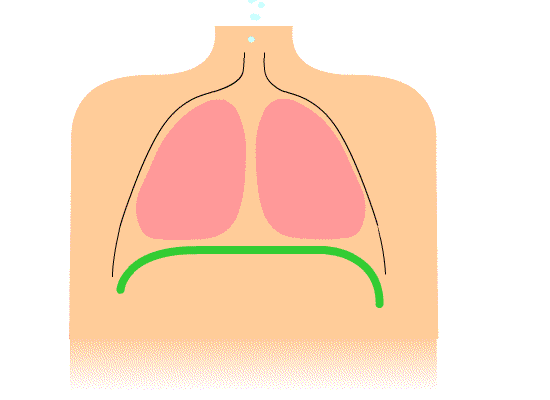
If you’re lifting a dumbbell or some other type of weight, for example, inhale slowly before lifting the weight and start exhaling as you lift the weight. Once you start lowering the weight back down, you can inhale again. This is not only done to help you get a rhythm going and prevent tension in the chest, but it can also improve the strength you gain from the training exercise. Once you master this technique, you’ll also notice that it allows you to recover more quickly from a workout so that you can get back to it the next day.
Diaphragmatic Breathing
The diaphragm is a very important muscle in the body. Unfortunately, many people develop bad habits throughout their life that prevent them from using this muscle effectively. If this happens, it’s imperative that you retrain your body to breathe in the most efficient and healthy way possible. This is even more imperative for COPD patients who frequently suffer from muscle atrophy (muscle wasting). Try the following to practice diaphragmatic breathing:
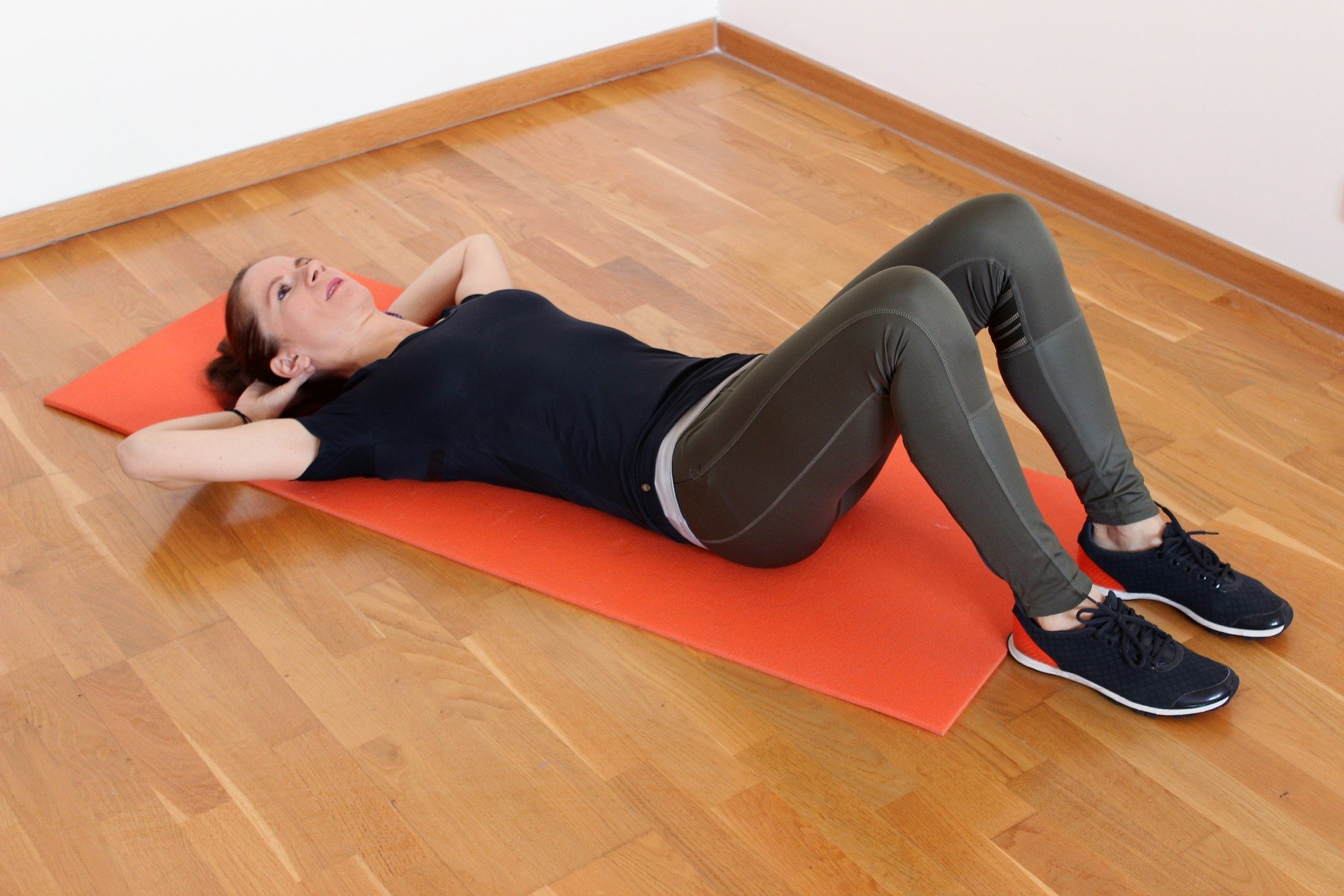
- Lie down on your back on the floor or on a bed. Relax your shoulders and put one hand on your stomach and the other on your chest.
- Inhale for 2 seconds through your nose. If you’re doing the exercise correctly, you should feel your stomach moving more than your chest.
- Slowly exhale with pursed lips and feel your stomach move back downward. Repeat this each day to improve the strength and coordination of your diaphragm.
Practice Endurance Improving Exercises
Lung function is a huge factor in determining your overall endurance. Many COPD patients are unable to run or walk long distances because of problems like low forced expiratory volume (FEV) and total lung capacity. However, by taking the time to create a plan for improving your overall endurance, you’ll be able to do more without adding to symptoms that you may be experiencing.

Typically, pulmonary lung function tests are done in your doctor or pulmonologists office. During this appointment, he/she will perform a number of tests including spirometry, plethysmography, or diffusion capacity tests and gather data about your lung function. Once this is done, your doctor will help you interpret the results and set you up with an exercise plan that best fits your needs. What’s more, you may even be able to track your progress at home using a lung function testing device provided by your doctor. In this case, you’ll be able to track your progress more easily and without having to leave your home.

Aerobic exercise or “cardio” exercise is what you will need to do in order to improve your endurance and lung function as a COPD patient. This includes things like walking, running, hiking, or any other type of activity that gets you moving. Don’t worry though, you won’t have to perform high-intensity exercises to experience the benefits. In fact, many patients are advised not to exercise too much if it will increase your likelihood of experiencing an exacerbation.
{{cta('b59df0c1-c4de-47a8-8e1c-0d33d4b414aa','justifycenter')}}
Walking
Walking is one of the most basic forms of aerobic exercise. And although it likely won’t raise your heart rate too much, it will do enough for you to see noticeable improvement if you stay consistent. When the weather is nice, it’s best to do some walking outside in a park or open space with clean air. However, due to current circumstances with COVID-19, it’s important to follow all your local regulations and wear a face mask. Use this guide by the Centers for Disease Control and Prevention (CDC) on how to wear a face covering correctly.
.jpg)
If you feel unsafe walking outdoors either due to the virus or the weather, there are plenty of options for walking indoors as well. Some COPD patients enjoy walking up and down the stairs for added exercise but you can also use a treadmill which makes it very easy to track how far you’re walking. If you want, you can even purchase a device like a Fitbit which will track exactly how many steps you’re taking in a day and help you set long-term goals that are more achievable.
Stationary Bike
Stationary bikes are another great option for at-home endurance training. They’re especially great for COPD patients because they allow you to do something a little more interesting than simply walking and it also works different muscle groups like the hamstrings, quadriceps, and the soleus and gastrocnemius in the calves. You also don’t have to deal with things like balance or the threat of falling over and getting hurt while on a stationary bike.

Tai Chi
Tai Chi is a long-standing Chinese martial arts tradition. While it’s been used for many purposes over the years, it’s commonly used by older adults and seniors as a form of exercise and meditation. We wrote a whole post on Tai Chi and it’s benefits, so check it out if you’re interested in learning more.

One of the main benefits of Tai Chi for people with lung conditions is that it allows you to tone your muscles, practice good posture and breathing, improve your endurance, and put your mind at ease all with one exercise. Tai Chi doesn’t involve fast-paced movements like other types of martial arts and it’s easy for beginners to jump into and start learning right away. According to COPD News Today, Tai Chi is an accessible, low-cost alternative to pulmonary rehabilitation.
Learn Strength Training Exercises
As aforementioned, muscle atrophy is a common occurrence in people with chronic obstructive pulmonary disease and other chronic lung conditions. According to this official publication, 40 percent of patients experience limited exercise capacity due to skeletal muscle loss in addition to pulmonary issues. This is often amplified by issues like oxidative stress, systemic inflammation, malnutrition, and hypoxemia.

What this means for those with COPD is that it’s extremely important to not only focus on improving your strength and working each muscle group, but you also don’t want to be losing more weight than you’re putting on. On the other hand, you don’t want to be overweight either because this can lead to problems like obstructive sleep apnea (OSA) and increase dyspnea (shortness of breath).

Much like endurance exercises, the strength training exercises you do don’t need to be high intensity. The consistency of your efforts is what will make the difference at the end of the day.
Weight Lifting
Resistance exercises are a key part of any COPD exercise program. Many patients may be intimidated by the thought of performing strength training with a chronic lung condition, but they should only be done under controlled conditions advised by your doctor. Since muscle atrophy can occur anywhere in the body, a full-body exercise routine is likely to benefit you most rather than one that targets a specific muscle group.

One concern many people will likely have is finding the right equipment to perform strength training while at home. If you normally have a gym, you probably don’t have weight machines around your home that you can use. In this case, you’ll have to use a mix of free weights, elastic resistance training, and body weight exercises. While not a lot is known about what exercises are most beneficial for COPD patients, Tom Storer, Ph. D. and former member of the Pulmonary Education and Research Foundation (PERF) board of directors, has put together a great guide for COPD patients interested in strength training.
Use a Portable Oxygen Concentrator
No matter what type of exercises you’re doing at home, one thing that can make your life a lot easier is the type of oxygen therapy device you’re using. A large portion of COPD patients are on oxygen 24/7 making it ineffective and difficult or near impossible to stay active. Luckily, there are alternatives to heavy and clunky oxygen tanks. Portable oxygen concentrators like the Inogen One G5 are lightweight, small, and easy to use, even when you’re up and moving around the house.
.png)
The G5 weighs in at just 4.7 pounds and it’s the size of a small handbag. This means you’ll be able to practice all the at-home exercise we mentioned previously without feeling restricted or confined to one space. Portable oxygen concentrators run on batteries and the G5 offers up to 13 hours of freedom on one charge. What this means is that you’ll be able to move around the house freely without your device being plugged into the wall or without long oxygen tubing that could be a tripping hazard.
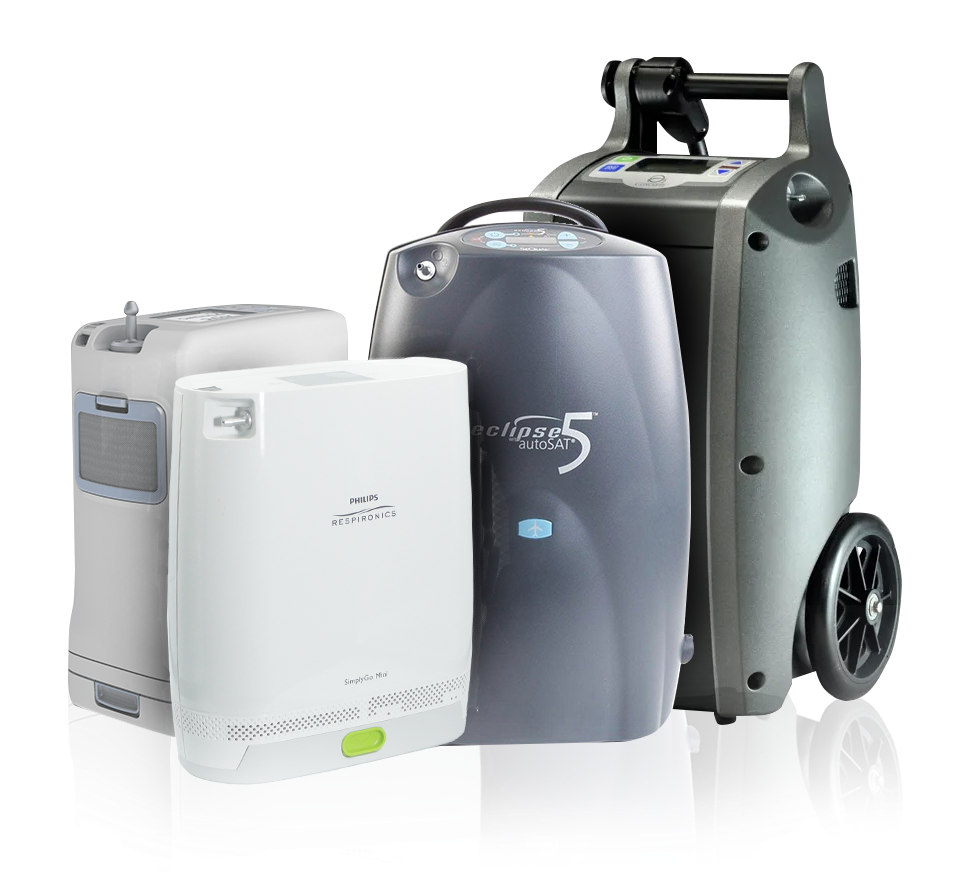
Despite portable oxygen concentrators being easier to use, they are less expensive than alternatives like compressed oxygen and liquid oxygen. And since these are difficult financial times for many Americans, it’s best to have a long-term plan for managing your COPD symptoms. When compared side-by-side with there are far less costs associated with portable oxygen concentrators. While oxygen tanks need to be refilled regularly, POCs, will run for 5 to 7 years without needing any additional financial investments.
.jpg)
Last but certainly not least, portable oxygen concentrators are much safer than oxygen tanks. While concentrators remove oxygen from ambient air, oxygen tanks store oxygen at high pressures. This makes them significantly more prone to explosions or other safety issues. Portable oxygen concentrators also use pulse dose technology which only delivers oxygen when a breath is detected. If you happen to drop your nasal cannula, the flow of oxygen will stop, reducing the likelihood of a fire.
At Home Pulmonary Rehabilitation
Pulmonary rehabilitation programs are designed to educate COPD patients about their lungs and train them on proper techniques for exercising safely and effectively. Under normal circumstances, you would visit a specialist who will walk you through everything you need to know, but with the coronavirus being a clear and present danger, most pulmonologists will advise against in-person pulmonary rehab programs — fortunately, there are alternatives.

Thrive ePulmonary Learning is a fully online disease management course designed to help COPD patients understand their condition and implement proven breathing and exercise techniques that can reduce symptoms like breathlessness, chest pain, and coughing. By joining, you’ll have access to the following:
- One-on-one instruction from registered respiratory therapists, nutritionists, and counselors
- Exclusive access to your own support

Pulse flow portable oxygen concentrators are different from continuous-flow concentrators in that they detect when you inhale and deliver a bolus dose of oxygen on-demand. Concentrators with pulse-flow technology are intuitive and responsive by automatically adjusting the amount of oxygen they deliver based on your breathing rate.
{{cta('fa8abc2a-1e88-4fa3-82fd-1cb5b9ed43b2','justifycenter')}}
Pulse flow portable oxygen concentrators are small, lightweight, and run on battery power. They tend to weigh less than 8 pounds and come with over-the-shoulder carrying cases to make them comfortable to wear as you go about daily activities.
In this article we will introduce you to the top four portable oxygen concentrators on the market and look at what makes each one unique. We'll help you compare the most important features that you look for in a portable concentrator, including:
- Size and weight
- Battery life
- Oxygen output
- Available accessories
- Comfort features
- And more!
The portable oxygen concentrators reviewed in this article are listed in no particular order. Let's get started by looking at the powerful and long-lasting Inogen One G3.
Inogen One G3

The Inogen One G3 is one of the best portable oxygen concentrators on the market, and it certainly has the features to back up it's reputation. It is a preferred choice because of its compact size, its uniquely responsive pulse flow technology, and its powerful battery.
Features Included in the Inogen One G3
Compared to previous models, the Inogen One G3 has a longer battery life and is lighter than ever. Its compact size makes it ideal to carry for easier breathing and comfort wherever you go.
The G3's sleek, lightweight design paired with a comfortable carrying case allows you to feel free to be active at home or away. It's so small and discrete that you won't feel like you're lugging around medical equipment as you go about your day.
Superior Oxygen Output
Oxygen output is always the first thing you should consider when shopping for the best portable oxygen concentrator, and the Inogen One G3 has that feature well covered. This oxygen concentrator offers pulse settings 1-5, which covers a wide range of patient needs.
Having five settings means the Inogen One G3 is extremely versatile. If you end up needing a higher flow rate you can simply adjust your pulse setting instead of having to buy a completely new portable concentrator.
The Inogen One G3 also adapts in real-time to your breaths per minute. During increased activity the G3 stays efficient by reducing the amount of oxygen it delivers with each pulse, and, alternatively, increases the amount of oxygen per pulse when your breathing rate decreases (such as during rest or sleep.)
High-Power Battery Options

With the Inogen One G3, you can choose from two different batteries: the powerful 16-cell battery or the lighter 8-cell battery.
8-Cell Battery:
If you're going for a smaller, lighter option, the 8-cell battery is the way to go, weighing only 4.8 pounds together with the portable concentrator. At pulse setting 2, this smaller battery will last about 4 hours before needing another charge. It takes up to 5 hours to recharge the battery, although some users report it takes even less.
Estimated 8-Cell Battery Life at Each Flow Rate:
- Flow rate 1: Up to 4.5 hours
- Flow rate 2: Up to 4.0 hours
- Flow rate 3: Up to 3.0 hours
- Flow rate 4: Up to 2.0 hours
- Flow rate 5: Up to 1.7 hours
16-Cell Double Battery:
If battery life is more important to you than weight, then you should consider the 16-cell battery. A single full charge will last you about 8.5 hours at pulse setting 2, and the extra battery cells increase the weight by an extra pound, bringing the concentrator's total weight to 5.8 lbs. This battery takes up to 8 hours to recharge.
Estimated 16-Cell Battery Life at Each Flow Rate:
- Flow rate 1: Up to 9.5 hours
- Flow rate 2: Up to 8.5 hours
- Flow rate 3: Up to 6.0 hours
- Flow rate 4: Up to 4.0 hours
- Flow rate 5: Up to 3.3 hours
Innovative Oxygen Delivery Technology
The Inogen One G3's Intelligent Delivery Technology detects your breathing more quickly and seamlessly than most other portable concentrators. It detects inspiration immediately and delivers a pulse of oxygen no later than 400 milliseconds after you begin to inhale.
Effectively, the Intelligent Delivery Technology utilized by the Inogen One G3 allows you to have the immediate oxygen access that continuous flow concentrators give you along with the added benefits of pulse-flow technology.
This means better comfort, because you will get a burst of oxygen right when you breathe in without the delay that some concentrators have. This quick detection makes it even more effective at delivering oxygen to the lungs and makes sure you get your full dose of oxygen with every breath.
The Inogen One G3's oxygen delivery system isn't just fast, but extra sensitive as well. It has no problem detecting even the most shallow breaths when you sleep.
Its smart technology also tracks your breath rate, responding to changes in your breaths-per-minute and adjusting the amount of oxygen it delivers accordingly. That way, when your breath rate decreases at night, the Inogen One G3 automatically adjusts the size of your dose (often referred to as the “bolus”) to make sure you're getting an adequate amount of oxygen.
It can even detect breaths when you inhale through your mouth, making it a perfect choice for around-the-clock use unlike some other pulse flow concentrators.
Simple, Easy Maintenance

The Inogen G3 is a very low-hassle machine. The only maintenance you should have to perform on it regularly is to change or clean out the filters weekly.
Fortunately, cleaning the filters in an Inogen One G3 is easy to do, and shouldn't take you more than a few minutes. It's a simple 3 step process:
- Turn off the machine and remove the two filters, one from each side
- Rinse out each filter with warm water and mild soap
- Leave both filters out to air-dry
Once the filters have dried out completely, your weekly maintenance is done! Just pop them back into your Inogen One G3 concentrator and it's immediately ready to use.
For long-term maintenance, the G3 simply needs its sieve beds replaced once every couple years, or more often if you use it heavily. But, luckily, the Inogen One G3 has made it as convenient as possible with removable and replaceable sieve beds that take minimal time and effort to change out.
Items Included in the Inogen One G3 Package

- Inogen One G3 Portable Oxygen Concentrator
- 1x 8-Cell Battery
- AC Power Supply
- DC Power Supplies
- Custom Carrying Case
- Filters
- Tubing
- Manual
- 3 Year warranty
Inogen One G3 Available Accessories
- 8-Cell Battery
- 16-Cell Battery
- AC Power Supply
- DC Power Supply
- External Battery Charger
- Custom Carrying Case
- Custom Backpack
- Filters
Product Specs for the Inogen One G3
- Weight: 4.8 lbs with 8 cell battery, 5.8 lbs with 16 cell battery
- Dimensions: 8.75 inches high, 7.25 inches long, 3 inches wide
- Flow Rate: Pulse flow settings 1-5
- Battery Life: Up to 4 hours with 8 cell battery, Up to 8 hours with 16 cell battery
- Power: 100-240 VAC, 50/60 Hz, 11-16 VDC
- FAA Approved: Yes!
- Warranty: 3 Year warranty
Why the Inogen One G3 is One of the Top Pulse Flow Oxygen Concentrators
The Inogen One G3 delivers more oxygen per pound than almost any other oxygen concentrator and comes with a variety of pulse settings and accessories. It's not the newest model in the Inogen One series, but it still remains one of the best options on the market because of its reputation and reliability.
The double battery for the Inogen One G3 has an impressive battery life, with up to 8 hours of use per charge. Maintenance and upkeep takes minimal time and cost, making it one of the easiest and most convenient oxygen concentrators to own.
If you're looking for a powerful yet lightweight pulse-flow oxygen concentrator, you're not going to find anything much better than the Inogen One G3. Its strong track record has earned it a large fan base and a well-deserved space at the top of best selling lists everywhere.
The Inogen One G4

The newest product in the Inogen One series, the Inogen One G4 meets the same standards of convenience and quality as its predecessors. It weighs less than three pounds and offers three pulse flow settings: settings 1-3.
It has a similar feature set to the G3, but in a smaller, lighter package.
Features Included in the Inogen One G4
With its sleek look, small size, and impressive feature set, the Inogen One G4 is quickly becoming one of the most popular oxygen concentrators in its class. Its unique features include its extremely compact design, its high oxygen output, and its great battery life.
Small, Compact, and Portable Design

At only 2.8 pounds, the Inogen One G4 is one the tiniest and most powerful pulse flow oxygen concentrators on the market. It's less than 6 inches long, 7.2 inches high, and small enough to carry just about anywhere.
The G4 is so tiny you could slip it into a small bag or purse and is so lightweight you will hardly know it's there. To make wearing the G4 on the go even more comfortable, you can get a custom carrying case with an extra-padded strap.
{{cta('43b79c5e-6bd6-4f02-ac27-2d038d20c146','justifycenter')}}
High Oxygen Output in a Small Package
Despite it's compact design, the Inogen One G4 doesn't lack in quality. It uses the same powerful Intelligent Delivery Technology as the G3, which ensures that you always get a full pulse of oxygen within milliseconds of inhaling.
Its three flow settings, settings 1-3, allow it to serve a range of oxygen patients' needs. This feature also gives you the flexibility to adjust your pulse flow during periods of worsened breathlessness if your doctor advises you to do so.
The Inogen One G4's high sensitivity for detecting shallow breathing during sleep makes it even a viable overnight oxygen choice for some patients and it's one of the best high flow portable oxygen concentrators on the market.
Great Battery Life

Like the G3, the Inogen One G4 has two battery size options: the single and double battery.
Single Battery:
The standard single battery lasts a little more than two hours on a charge, and together with the G4 oxygen concentrator weighs a total of 2.8 pounds. This is the more lightweight option.
Estimated Battery Life for Each Flow Rate Using the Single Battery:
- Flow Rate 1: Up to 2.7 hours
- Flow Rate 2: Up to 2.25 hours
- Flow Rate 3: Up to 1.33 hours
Double Battery:
The double battery lasts about 4.5 hours on a single charge, and remains lightweight, having only an extra .5 pounds compared to the single battery. Together with the G3 concentrator, it weighs a total of 3.3 pounds.
Estimated Battery Life for Each Flow Rate Using the Double Battery:
- Flow Rate 1: Up to 5.0 hours
- Flow Rate 2: Up to 4.5 hours
- Flow Rate 3: Up to 2.5 hours
Compared to other portable oxygen concentrators of such a small size, the G4 has a vastly superior battery life. The only other portable concentrator in it's class, the AirSep Focus, provides only 1.5 hours of battery life on one charge.
Items Included in the Inogen One G4 Package

- Inogen One G4 Portable Oxygen Concentrator
- Single Battery
- AC Power Supply
- DC Power Supply
- Custom Carrying Case
- Padded Shoulder Strap
- Filters
- Manual
- 3 Year Warranty
Inogen One G4 Available Accessories
- Single Battery (4-Cell Battery)
- Double Battery (8-Cell Battery)
- AC Power Supply
- DC Power Supply
- External Battery Charger
- Custom Carrying Case
- Shoulder Strap
- Filters
Product Specs for the Inogen One G4
- Weight: 2.8 lbs with single battery, 3.3 lbs with double battery
- Dimensions: 7.2 inches high, 2.86 inches wide, 5.96 inches long
- Flow Rate: Pulse flow settings 1-3
- Battery Life: up to 2 hours on single battery, up to 4.5 hours on double battery
- Power: 100-240 VAC, 50/60 Hz; 11-16 VDC
- FAA Approved: Yes!
- Warranty: 3 year warranty
Why the Inogen One G4 is one of the Top Pulse Flow Oxygen Concentrators
The Inogen One G4's best feature is its compact, lightweight design. Unlike some bulkier portable oxygen concentrators, the G4 doesn't feel like a burden, leaving you free to go about your active life without weighing you down.
The next best thing about the G4 is its customizability. With three flow settings and two battery options, the Inogen One G4 is one of the best choices for daily use, in or out of the house.
You can use the G4's standard single battery for light activity and adjust it's flow settings whenever the need arises. When you're away from home for longer, the double battery will allow you to depend on the portable concentrator for twice the amount of time.
Finally, the G4's Intelligent Delivery Technology gives you a reliable, nearly instant pulse of oxygen every time you inhale. It's versatility and sensitive pulse flow technology makes it one of the most powerful and comfortable pulse flow oxygen concentrators you can find.
The LifeChoice Activox 4L

Another great choice for a lightweight portable oxygen concentrator is the LifeChoice Activox 4L. It comes with a long-lasting built-in battery and, at less than 5 lbs in weight, is easy to wear on-the-go.
Patients who use the Activox 4L often choose it for its long battery life and versatile carrying case. With the ability to deliver more than 4 liters of oxygen per minute and adapt each oxygen pulse to your breathing rate, you'll have a hard time finding a more powerful and responsive portable concentrator.
Features Included in the LifeChoice Activox 4L
The Lifechoice Activox 4L comes packed with 4 pulse flow settings and a battery life that puts most other portable oxygen concentrators to shame. Its small size and weight makes it easy to carry and it comes with a unique carrying case that allows you to adapt it to all kinds of activities and personal preferences.
Impressive Battery Life

Very few small, portable oxygen concentrators can beat the battery power of the LifeChoice Activox 4L. On just one charge, the Activox 4L lasts up to a whopping 8.25 hours on pulse flow setting 2.
Unlike the Inogen One G3 and G4, the LifeChoice Activox 4L's battery is built in to the device, so you never have to worry about changing it out. But if you really want to supercharge the Actovox 4L's battery life, you can get an optional external battery that packs an extra 3.75 hours of power.
That means the LifeChoice Activox 4L can keep going for a total of up to 12 hours when paired with the external battery. That's an incredibly impressive battery life for such a small portable oxygen concentrator!
Estimated Battery Life for Each Flow Rate:
- Flow Rate 1: up to 10.25 hours on internal battery, up to 15 hours when combined with external battery
- Flow Rate 2: up to 8.25 hours on internal battery, up to 12 hours when combined with external battery
- Flow Rate 3: up to 5 hours on internal battery, up to 7.75 hours when combined with external battery
- Flow Rate 4: up to 4 hours on internal battery, up to 6.25 hours when combined with external battery
Convenient and Versatile Carrying Case
One of the LifeChoice Activox 4L's most beloved features is its comfortable and unique carrying case. Unlike typical single-strap cases that come with most portable oxygen concentrators, the Activox 4L carrying case has 4 straps that allow you to use the device hands-free or however is most comfortable for you.
The LifeChoice Activox 4L carrying case allows you to wear it in four different ways:
- Over the shoulder (like a traditional carrying case)
- Backpack style
- Strapped around your waist
- Briefcase style
Patients with the LifeChoice Activox 4L find that its carrying case makes all the difference when it comes to convenience in daily activities. No matter where you go, your versatile Activox 4L carrying case can be adjusted to stay comfortable and out of your way.
Perfect for Round-the-Clock Everyday Use

The LifeChoice Activox 4L comes fully equipped with adaptable pulse flow technology that includes a sleep mode for nighttime use. That paired with its unmatched battery life makes it one of the best portable concentrator for any occasion, day or night.
The Activox 4L can deliver up to 4 liters of oxygen per minute, allowing it to serve a much wider range of oxygen needs than the original Activox, which supplied only 1-3 liters per minute. It also has a responsive Auto Mode feature built in that adapts the amount of oxygen it delivers based on your breathing pattern for maximum comfort.
In sleep mode, the Activox 4L keeps you covered by increasing its sensitivity by ten. This feature allows it to detect shallow breathing and even shallow mouth breaths while you rest.
Items Included in the LifeChoice Activox 4L Package

- LifeChoice Activox 4L Portable Concentrator
- Internal Battery
- AC Power Supply
- DC Power Supply
- Custom Carrying Case
- 4-Way Strap System
- Accessory Bag
- Tubing
- Manual
- 3 Year Warranty
LifeChoice Activox 4L Available Accessories
- External Battery
- AC Power Supply
- DC Power Supply
- Custom Carrying Case
- 4-Way Strap System
- Accessory Bag
Product Specs for the LifeChoice Activox 4L
- Weight: 4.8 lbs
- Dimensions: 7.8 inches high, 9 inches long, and 4.38 inches wide
- Flow Rate: Pulse Flow Settings 1-4
- Battery Life: Up to 8.25 hours on internal battery, up to 12 hours when combined with external battery
- Power: 100-245 VAC, 50/60 Hz; 11-16 VDC
- FAA Approved: Yes!
- Warranty: 3 Year limited warranty

Allergy season is a nuisance for anyone who suffers from allergies, but it can be a serious struggle for people who also suffer from COPD. Common allergens like pollen, dust, and mold can not only cause uncomfortable allergic reactions, but they can also irritate your lungs and airways and make it more difficult to breathe.
At least one in five people in the US suffer from allergies, and that includes many people who also have COPD. Unfortunately, there hasn't been a lot of research on how the two conditions interact, and there are few official treatment guidelines to help COPD patients manage their allergies.
{{cta('fa8abc2a-1e88-4fa3-82fd-1cb5b9ed43b2','justifycenter')}}
However, thanks to research from John Hopkins University, we do know that people who suffer from both allergies and COPD are more likely to have worsened symptoms and shortness of breath. They are also more likely to experience exacerbations, which are episodes of increased symptoms that can be serious and even require hospitalization.
Currently, the best known way handle allergies when you have COPD is to treat the symptoms with medication. The best treatment, however, is prevention to keep you from having allergic reactions at all.
If you do your best avoid exposure to pollen, dust, and other allergens, then you can prevent your symptoms from worsening in the first place. That's why, in this guide, we're going to give you a variety of effective tips and techniques to help you keep allergens at bay and prevent them from making your COPD worse.
How Allergies Affect COPD

Seasonal nasal allergies, also known as allergic rhinitis, tend to peak in the summer. However, they can start as early as the spring and last late into the fall, since these warmer months are when plants, mold, fungi, and dust mites thrive.
Some people experience allergies during the winter, too, although it is less common. Most winter allergies come from spending extra time in indoor places with dust and mold.
All of these different factors can trigger respiratory symptoms for the more than 24 million people in the US who suffer from seasonal allergies. But for people who suffer from COPD as well, the pollen, mold spores, and generally poor air quality can actually make their disease worse.
If you suffer from allergies and breathe in allergens like pollen or mold, it triggers the release of histamine that affects your upper and lower respiratory tracts. Histamine causes an inflammatory response, causing irritation, swelling, and increased mucus secretion in the lungs and airways.
Here are some common symptoms associated with seasonal allergies:
- Itchy, watery eyes
- Runny nose
- Nasal and sinus congestion
- Excess mucus production
- Coughing and sneezing
As you can see, many allergy symptoms are respiratory symptoms that have the potential to interact or compound with existing symptoms of COPD like coughing, wheezing and shortness of breath. For example, an allergic reaction can cause excess mucus production and swelling in the airways, which in turn blocks airflow and makes it even more difficult to breathe.
In extreme cases, this can cause a COPD exacerbation, but even minor allergic reactions can be troublesome. When COPD already makes it difficult to breathe and keep your airways clear of mucus, you can't afford to have allergies making the problem even worse.
If you experience allergy symptoms on a regular basis, especially if you notice that they get worse when you spend time outdoors, you might be suffering from seasonal allergies. You should visit your doctor as soon as possible to get an evaluation so you can find an allergy medication to control your symptoms.
Allergies can be uncomfortable for anyone, but if not properly treated they can be serious and debilitating for people who suffer from other respiratory conditions like COPD. It's important for COPD patients to take any increase in respiratory symptoms seriously, because they can quickly lead to serious complications or exacerbations.
Talk to your doctor about tips and techniques for reducing allergens in your home and keeping your symptoms in check when your allergy triggers can't be avoided. Make sure to follow your COPD treatment plan whenever you experience worsened symptoms, and seek medical attention if they get severe or don't go away.
To prevent your symptoms form getting to that point, continue reading this guide for a multitude of tips and tricks to help you avoid and eliminate allergy triggers this season. We've put together a number of ideas and techniques that will help you keep your home hypo-allergenic and allow you to stay happy, healthy, and comfortable throughout allergy season and the rest of the year.
{{cta('b59df0c1-c4de-47a8-8e1c-0d33d4b414aa','justifycenter')}}
How to Manage Summer Allergies When You Have COPD
Know Your Triggers
Allergens are everywhere; in the air we breathe, the food we eat, and in our carpets, furniture, and clothes. However, how these allergens effect every individual person is different, and some people are more sensitive to certain types of allergens than others.
If you have COPD and suffer from allergies, it's important to talk to your doctor about your symptoms so you can identify the source. Getting an allergy test or keeping a diary of your symptoms can help you narrow down the possibilities and help you better understand what triggers your allergic reactions.
Once you know what's causing your allergies, you can take steps to avoid coming into contact with whatever causes your symptoms. Read all of the tips in this article to learn techniques for doing just that and to find new ideas and inspiration for keeping your allergies at bay.
Check Allergen Reports
There are many places you can check to get information about allergy conditions in your local area on any given day. You can check your local weather report, pollen.com, or other online sources like The Weather Channel to get daily forecasts for the levels of pollen and other particles in the air.
Some allergy reports give detailed information for specific types of pollen, including pollen from trees, grass, and weeds. This can be helpful if you know which specific plants and types of pollen tend to trigger your allergy symptoms.
You can use this information to schedule outdoor activities and plan your exercise on days when pollen levels are lower. When pollen and other allergens are high, it's best to stay indoors as much as possible to keep it from making your COPD worse.
Take Daily Allergy Medication

No matter how hard you try, you're not going to be able to avoid all of your allergy triggers all the time. Your symptoms are bound to act up at least occasionally, and doctors often recommend taking daily allergy medicine all throughout the allergy season to prevent symptoms before they get worse.
If you suffer from allergies and COPD, it's essential to talk to your doctor and get an allergy medication that works for you. If you don't treat your symptoms daily, they can continue to get worse and cause your COPD to flare up.
Many people have to try a few different allergy medications before they find one that effectively treats their symptoms. Make sure to take your medicine as directed and work with your doctor to find a medicine that's effective for you.
Also, remember than many kinds of allergy medications work best when you take them consistently at the same time every day. They are often less effective if you take them irregularly or skip a dose, which can worsen your symptoms and make your allergies more difficult to control.
Stay Indoors When Pollen and Humidity are High

Sometimes the best way to avoid allergens is to avoid going outside altogether. Of course, you can't avoid going outdoors all the time, but it's a good idea when the allergy forecast looks bad.
Whenever pollen levels are extremely high, you should try to stay indoors as much as possible. Close all your windows, shut all your doors, and turn on your home ventilation system to control allergy levels in your house.
Humid days can also be a problem, since they tend to encourage mold and dust mites to proliferate. Humidity traps smog and lowers air quality, which can be especially irritating to your lungs and airways if you have COPD.
Take Antihistamines
Even if you take allergy medication daily, your allergy symptoms can still act up for many reasons. Being sick, fatigued, or exposed to allergens on high-pollen and high-humidity days can trigger allergic reactions that take a little extra help to keep at bay.
When this happens, taking an antihistamine like benadryl can give your body the extra help it needs to get over the symptoms. However, use them carefully, because antihistamines can sometimes dry up your mucus, make it thicker, and cause you to have even more trouble breathing.
That's why it's important to talk to your doctor before you use any new medication. Whenever your symptoms get worse, you should always follow your COPD action plan first and consult a medical professional before trying any other medicine.
See a Doctor if Your Allergies Get Out of Hand

Sometimes, despite your best efforts to avoid triggers, an allergy attack can hit you out of nowhere. When you have COPD, it's important to seek medical attention right away if your symptoms suddenly worsen and don't get better fast.
Doctors can prescribe you oral or nasal steroids to deal with acute allergy attacks and COPD exacerbations. They can also give you antihistamines, steroid shots, and breathing support if you need them.
Get an Allergy Tracking App for Your Phone
Checking multiple weather and allergy forecasts every day can be bothersome and easy to forget. Luckily, there are a number of great android and iPhone apps you can get that let you track allergy forecasts right on your phone.
Pollen.com has a popular app for both iPhone and android called Allergy Alert that tells you everything you need to know about pollen levels in your area. You can input multiple locations and get accurate 5-day allergy forecasts with detailed information about the types of pollen that are prevalent.
The Allergy Alert app also includes an allergy diary where you can record your daily symptoms and keep track of how your allergies change throughout the season. You can even print out your diary as a chart or calendar to help you and your doctor keep tabs on your symptoms.
Other great allergy apps include WebMD Allergy, Zyrtec AllergyCast, and Allergy Advisor. You can download all of these apps from the Apple or Google app stores.
Allergy-Proof Your Home
Get a Good HVAC Air Filter
All home HVAC ventilation systems include an air filter that has to be cleaned or changed out on a regular basis. Some filters only need to be changed once per season, but others should be swapped out more often, every couple of months or so.
Not all air filters are created equal, and some are much more effective than others at getting out the tiny particles that trigger allergies. Most filters include a MERV rating, which is a standard rating that tells you what kinds of particles a filter can and cannot screen out.
A lower MERV rating is associated with low-quality air filters, while high MERV ratings are given to more effective filters. You should always look for a hypo-allergenic air filter that's fine enough to catch tiny allergens like pollen and mold spores.
Get a Good Air Purifier
While a decent HVAC air filter is important for indoor air quality, you can step it up a notch further by getting a mechanical air purifier. These devices use multiple filters and even UV light to remove allergens from the air much more effectively than an HVAC filter alone.
Air purifiers come in a variety of qualities and sizes, and what kind you get depends on your individual needs. You can get a small, portable device for use in a single room or you can even get a large, whole-house air purifier that hooks up to your home's main ventilation.
Some air purifiers are better than others, and their advertising can be deceptive. Look for air purifiers that are certified by the Asthma and Allergy Foundation of America (AAFA) to ensure that the one you buy can filter common allergens from the air.
HEPA filters are considered to be one of best high-quality air purifiers and is the gold standard for mechanical air filtration. They use multiple filtration steps and can screen out least 99.97% of particles that are 0.3 microns or larger from the air.
Use Smooth Surfaces and Avoid Fabrics

Hardwood floors and tile are much easier to clean than carpet, and they don't collect pollen and other particles like carpet fibers do. Likewise, decorating with fabrics like curtains and rugs provides more places in your home for allergens to build up.
To prevent bothersome allergens and harmful irritants from hanging around your home, make sure to vacuum and dust all surfaces in your house regularly. Don't forget little-used areas like basements and closets, and consider getting rid of rugs, curtains, and other items that attract dust.
It can also help to furnish your house with couches, chairs, and other furniture that won't collect allergens. Wood, leather, and other similar materials are easy to wipe clean, while soft fabrics attract pollen and dust and are difficult to clean thoroughly.
Rinse Off after Being Outside

It's a good idea to take a shower or a quick rinse when you arrive home after being outdoors. Especially if you've been near a lot of grass, trees, or other foliage, you could be carrying a large amount of pollen and mold spores on your person.
But if you take the time to rinse the allergens out of your hair and skin, you'll avoid carrying them around with you throughout the day. It will also prevent you from scattering allergens about your home where they can build up and make your symptoms worse for days.
Change Clothes When You Come Indoors

Pollen and other allergens tend to stick to your clothes and shoes when you spend any extended amount of time outdoors. Especially if you don't have time to shower, you should change into a fresh set of clothes so you don't track allergens all throughout your house.
De-clutter and Deep Clean
Dust mites, mold, pollen, and other allergens can hide in any nook and cranny. That's why it's important to do a thorough, deep cleaning at least a couple times a year, especially if you suffer from allergies.
Your deep clean should include removing any clutter and cleaning behind furniture, cabinets, and other belongings. You don't want to leave any stone unturned, that way you start out with the cleanest, most allergy-free space possible.
You should also extend your deep cleaning to other spaces you spend time in, like your car and garage. Clear out any clutter, vacuum your car seats and mats, and don't forget to wash the outside, too.
Replace the Cabin Air Filter in Your Car
If you have a long commute or take extended trips in your car, having a clean cabin air filter can improve your allergy symptoms. The cabin air filter traps particles from the air that flows through your car's ventilation system, and you should replace it often during the summer when it collects extra pollen and mold.
How often you should do this depends on your car, and your owner's manual will help you figure out the exact time frame. However, as a general rule, the Car Care Council recommends changing out your cabin air filter at least every 12,000 to 15,000 miles you drive.
Dust and Vacuum Regularly

A good air filter or purifier will remove most allergens from the air in your house, but it can't do anything about the dust, pollen, and mold spores that settle on the surfaces in your home. To get rid of all that, you have to dust, vacuum, and sweep regularly.
Don't forget to clean out-of-the-way spaces like high cabinets, closets, corners, rugs and drapes. These are common places where dust and mold tend to collect that people commonly overlook when cleaning.
Check Problem Areas for Mold and Mildew
 |
| Image courtesy of carlpenergy on Flickr. |
There are certain places in houses that tend to have a higher risk of mold build-up. These include basements, bathrooms, attics, crawl spaces, and any areas that might get damp.
You should inspect these areas in your home somewhat regularly to spot mold and mildew growth before it gets out of control. Some mold spots can be cleaned yourself by hand, but you might need to call in a professional for larger problems.
It's also important to identify and repair any leaks in your pipes so they don't cause mold to grow in your walls. If you notice your allergies are acting up in your house, getting it thoroughly inspected for mold and fungus by a professional could help you find and take care of any problems.
Promptly Clean Damp Spots
Water mishaps are not uncommon occurrences in homes. You can never predict when a faucet will burst or a heavy storm will flood your basement.
What you can do, however, is make sure to clean up any spills, floods, or other damp spots as quickly as possible after they happen. If any area remains damp for more than 48 hours, you're almost certain to get mold growth.
{{cta('43b79c5e-6bd6-4f02-ac27-2d038d20c146','justifycenter')}}
Control the Humidity in Your Home

When the humidity in your house climbs higher than sixty percent, the chance for mold growth greatly increases. That's why you should try to keep your home's humidity levels between thirty and fifty percent.
You can do this by using a dehumidifier when the weather is especially humid outside. You can get small, portable dehumidifiers that work for a single room, or you can invest in whole-house units that pull moisture out of all the air in your home.
Running the air conditioner in the summer is another effective way to reduce moisture in the air, as long as the humidity isn't too high. It also helps to vent appliances like dishwashers and dryers outdoors, and to make sure you always open your window or turn on your vent fan when you take a shower.
Wash and Groom Your Pets

If you have pets, they can be a major contributor to your allergies. It's important to wash and groom them regularly to reduce the amount of allergens they bring into your house.
When dogs and cats go outside, all kinds of pollen, dust, and mold spores that are in the grass and in the air stick to their fur. When they come inside, all of those allergens are transferred from their fur onto any carpet, clothes, and furniture they come in contact with.
Giving your pets baths and brushing them regularly helps prevent these allergens from building up in their fur and causing your allergies to act up. It also helps to keep your pets off of your furniture and bedding, so you won't be sitting and sleeping in places where your pets have tracked pollen.
Get a HEPA Vacuum Cleaner
A regular old vacuum can get a lot of the pollen, dust, and other allergens out of your carpet and furniture, but it can only do so much. Sometimes vacuuming can even scatter these particles into the air and actually make your allergies worse.
In order to allergy-proof your home more effectively, you can get a vacuum with a HEPA filter that removes at least 99.97 percent of particles that are 0.3 microns or larger. A regular vacuum can only filter particles that are 50 microns or larger.
Just make sure you get a HEPA filter-compatible vacuum that's large enough to fit the size of your home. Otherwise, you'll end up having to change the filter quite often in order to keep it working properly.
Conclusion
When you have COPD, any problems that affect your respiratory tract and make it difficult to breathe are automatically more serious. Even minor allergies can lead to worsened coughing, wheezing, and breathlessness associated with COPD.
Fortunately, it is totally possible to take control over your allergies and keep yourself healthy during allergy season. It just requires some extra cleaning, extra planning, and arming yourself with the right equipment to keep allergens out of your home.
The relationship between allergies and COPD is still not completely understood, and doctors are still trying to gather more research and information on this topic. But for now, treating symptoms with medication and avoiding the allergens that trigger them are the best way to handle allergies when you have COPD.
If you use the techniques in this guide you'll be able to better protect your lungs and airways from allergy-triggering particles like like pollen, mold, and dust. You'll be able to breathe easier, feel better, and enjoy life even when allergy season is in full swing.
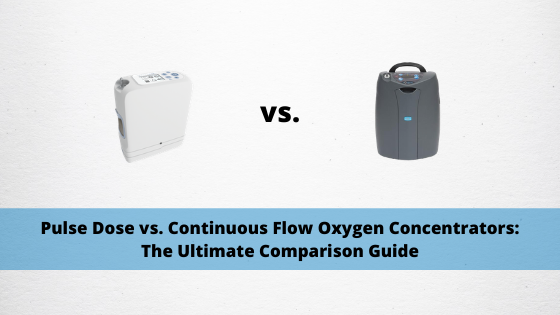
If you suffer from any number of respiratory ailments, you’re likely well aware of the important role oxygen therapy plays in your life. COPD patients, in particular, are able to significantly reduce chronic symptoms like breathlessness and chest pain by using supplemental oxygen on a daily basis. On the other hand, short-term oxygen therapy can assist patients in recovering more quickly after a hospital visit.
But if you’ve kept up with our blogs here at LPT Medical, you know that the way oxygen is administered is often just as important as using supplemental oxygen in the first place. Receiving too little oxygen might cause a flare-up in your symptoms, whereas receiving too much oxygen could lead to oxygen toxicity and other health complications.
One of the first things you should understand about oxygen administration is the difference between a pulse dose oxygen concentrator and a continuous flow oxygen concentrator. While each of these oxygen delivery methods is viable, they each have their pros and cons, and your oxygen therapy experience will vary greatly depending on which one you choose.
Ideally, this post will cover everything you need to know about pulse flow and continuous oxygen concentrators. However, if you still have questions, fill out the form to the right of the page and one of our respiratory specialists will reach out to you.
{{cta('fa8abc2a-1e88-4fa3-82fd-1cb5b9ed43b2','justifycenter')}}
What is a Continuous Flow Oxygen Concentrator?
As the name suggests, a continuous flow oxygen concentrator administers a constant flow of oxygen to the respiratory patient. A good analogy for continuous flow oxygen is a water fountain. When you use a water fountain, you don’t drink all of the water that is coming out of the spout. The water fountain puts out a consistent amount of water and the amount you drink is a product of the amount and the size of sips that you take. Similarly, with a continuous flow oxygen concentrator, the amount of oxygen that enters your lungs is a product of the amount and size of breaths that you take.
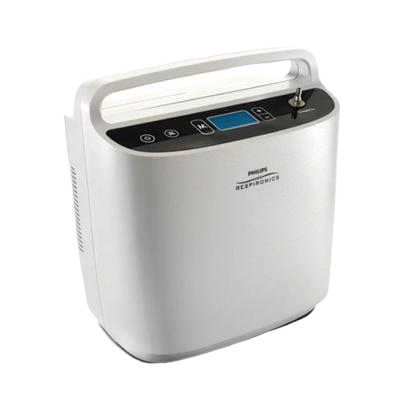
Another medical oxygen device that uses continuous flow oxygen administration are oxygen tanks. Since oxygen tanks used compressed oxygen they don’t need any electrical components to push oxygen out the nasal cannula. All they need is a nozzle that can regulate the amount of oxygen that is coming out of the tank. Liquid oxygen tanks use a similar principle, but instead of the oxygen being compressed inside the tank, it’s compressed as it exits the tank and turns to gas.
They Offer Great Versatility
Possibly the greatest thing about continuous flow oxygen concentrators is how versatile they are. Continuous flow units can be bought as either a portable or a stationary oxygen concentrator (home oxygen concentrator) so you’ll have options based on your wants and needs. Portable oxygen concentrators have batteries so you can use them wherever you want, however, stationary concentrators need to be plugged into a wall to operate.

Another great thing about continuous flow portable oxygen concentrators is that they typically offer a pulse flow setting as well. This can be confusing to many people because when they hear the term “continuous flow portable oxygen concentrator” they assume that it doesn’t offer a pulse flow setting. However, oxygen concentrators like the SeQual Eclipse 5, for example, offer continuous flow settings 0.5-3.0 LPM, but it also offers pulse flow settings 1 through 9. This is much more than what your average pulse flow oxygen concentrator will provide.
They’re CPAP Compatible
COPD commonly coexists with sleeping disorders like obstructive sleep apnea in what’s known as COPD-OSA overlap syndrome. This is partially due to the fact that OSA and COPD are both common conditions, but the higher likelihood of peripheral edema and increased BMI associated with chronic bronchitis also promotes OSA. As such, someone with COPD is more likely to experience sleep disorders.
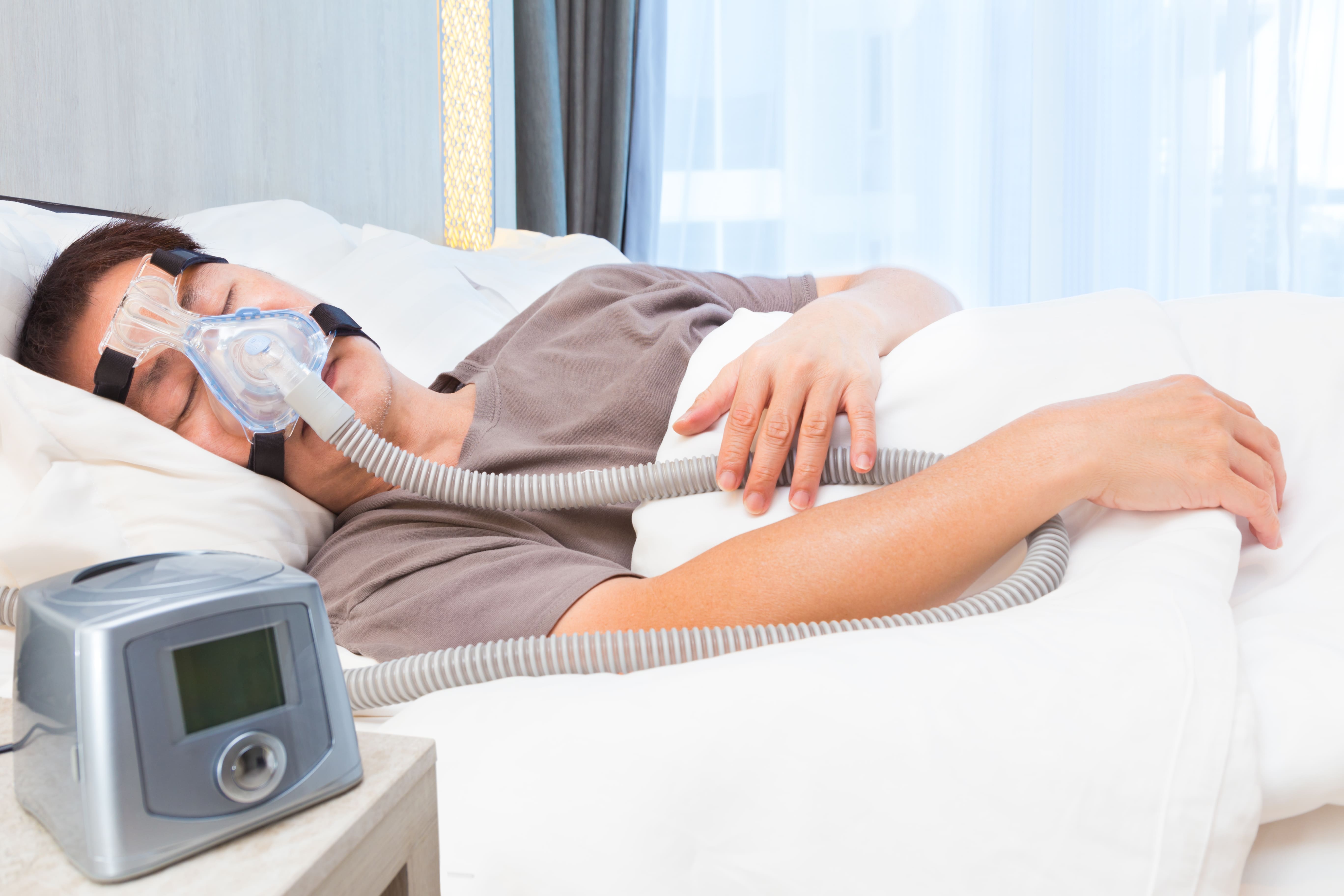
When a patient with OSA sleeps, their airways collapse making it difficult to breathe properly. If this person also has COPD, they’ll be more likely to experience complications at night due to the restricted airflow. In these situations, it’s advised that the patient uses both a continuous positive airway pressure (CPAP) machine and an oxygen concentrator while sleeping.
Continuous flow is the only type of oxygen administration that is compatible with CPAP and BiPAP machines. Some continuous flow oxygen concentrators can be attached directly to a CPAP machine, but others will require you to buy a “bleed-in adapter.” If you and your doctor determine that this is the best course of action for you, be sure to follow the directions closely in your oxygen concentrator user manual on how to set up and use the device correctly.
They’re FAA Approved
At this point in time, all continuous flow portable oxygen concentrators are approved by the Federal Aviation Administration (FAA) for in-flight use. What this means is that if you ever need to fly across the country or even outside of the United States, you can do so with your portable oxygen concentrator at your side the whole time. While there are no restrictions on oxygen concentrators and flight attendants aren’t allowed to stop you from bringing one on board, you should make sure to contact the airline at least 48 hours ahead of your flight to let them know you’ll have a POC with you. Typically, they’ll ask that you have at least 1.5 times as much battery life as the duration of your trip and they may have an extra charge for a carry on item as well.

They’re Heavy and Bulky
While continuous flow oxygen concentrators have plenty of benefits, we’d be remiss not to discuss the disadvantages as well. Possibly the biggest downside to these machines is that they’re bulky and heavy. Most continuous flow machines weigh between 10 and 20 pounds which tends to be too heavy for most people to sling over their shoulders. Instead, most patients find it more comfortable to use a wheeled cart which either comes with the concentrator or is sold separately.
One people dislike using continuous flow machines is that they’re more cumbersome and difficult to take out of the house. If you ever need to take public transportation, you may find yourself stressing out about your concentrator rather than focusing on what you’re doing. Taking a flight is especially difficult because there’s already limited foot space on a plane, but with a continuous flow POC, you’ll have even less.

They Have Limited Battery Life
Battery life is one of the most important aspects of a portable oxygen concentrator because it determines how long you can be out of the house without having to find a place to recharge. Unfortunately, continuous flow machines don’t offer much in the way of battery life. The average machine will offer between 1 and 10 hours of freedom depending on the flow setting you use and the type of battery you are using.

While this may sound like a lot at first, once you actually get out of the house and start doing things, you’ll be surprised at how fast the time goes. You may find that it’s difficult to take long trips unless you bring extra battery packs. However, even if you do, you’ll have to stop frequently to replace the batteries.
What is a Pulse Dose Oxygen Concentrator?
Pulse dose is the other major type of oxygen delivery along with continuous flow. Whereas continuous flow has been around throughout the whole existence of oxygen therapy, pulse dose is a fairly new technology. Rather than putting out a constant stream of oxygen, a pulse dose machine only puts out oxygen when the patient inhales. Essentially, they’re designed to detect a change of pressure in the user’s nasal cannula when they begin to inhale. It then administers a precisely timed oxygen bolus (dosage).

Pulse dose regulators (oxygen regulators) can be attached to oxygen tanks and they perform the same function as a pulse dose oxygen concentrator would. Normally, oxygen tanks put out continuous flow oxygen, but the regulator will give you precise doses of oxygen that can help you ration the oxygen that’s left in the tank. Certain oxygen conservers can even be used with liquid oxygen tanks.
They’re More Technologically Advanced
One of the first things you’ll notice about pulse dose oxygen concentrators is that they’re significantly more complex than continuous flow oxygen concentrators; not in how difficult they are to use, but in the features that they offer. The Caire FreeStyle Comfort, for example, offers a built-in program called CAIREView. This program enables you to track important information about your oxygen usage including your time of use, oxygen flow setting, and more.

CAIREView is also equipped with something called “telehealth technology.” We talked about this extensively in a previous post, so feel free to check it out if you want to learn more. However, if you don’t want to get into the details, just know that it’s a technology that could be beneficial to a great number of people. Essentially, what it does is send information via a secure network to both the oxygen manufacturer and your doctor allowing them to see up-to-date information about your oxygen usage and the integrity of your portable oxygen concentrator.

While this is one of the first examples of the use of telehealth technology in oxygen concentrators, it’s a good sign for anyone who’s interested in achieving more freedom and independence from their portable oxygen device. With CAIREVIew, you’ll be able to leave your home knowing that you’re always being monitored by a medical professional. If something were to go wrong with your device, the oxygen manufacturer may be able to troubleshoot and fix it without you ever having to ship the device in and wait weeks or months to get it back. It could also save you a significant amount of time and money.
They’re Small and Lightweight
Possibly the greatest benefit to using a pulse dose concentrator over a continuous flow concentrator is how small and lightweight they are. COPD has long been considered a debilitating disease because it’s characterized by chronic lung inflammation, breathlessness, and chest pain. What’s more, in the past, COPD patients had to carry around heavy oxygen tanks which set them back even more.
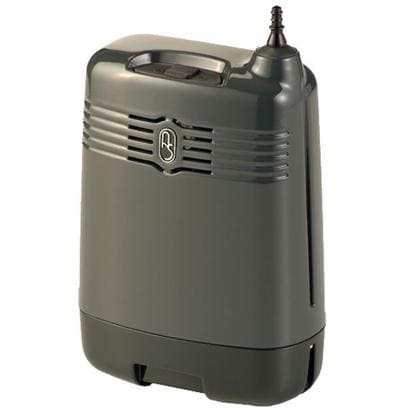
Pulse flow oxygen concentrators, fortunately, are the lightest oxygen therapy devices ever produced. Due to the way that pulse dose technology works, these concentrators are able to administer oxygen much more efficiently. Unlike continuous flow concentrators, there is no “wasted” oxygen with these units. All oxygen that is put out of the device will be inspired by the oxygen patient. As a result, oxygen manufacturers are able to make them much smaller and lighter to carry.
Another reason pulse dose oxygen concentrators are so efficient is that they have the best batteries offered on the market. These concentrators use lithium-ion batteries which are the same ones that are used in common electronic devices such as cell phones, tablets, and laptops. In the future, you can expect this technology to advance even more quickly due to the high demand for light and efficient portable electronic devices.
They Offer Greater Freedom
Freedom is one of the most fundamental human rights. Without freedom, we would not be able to pursue our dreams, go where we want, and do as we please. Unfortunately, chronic respiratory conditions like COPD and cystic fibrosis can restrict your freedom significantly. Many people with COPD spend their life letting their disease control and define them rather than taking control of their symptoms and taking their life back.
.png)
Instead of forcing you to depend on friends and loved ones like oxygen tanks do, pulse dose oxygen concentrators allow you to experience full freedom and independence. You’ll never have to go out of your way to refill your oxygen tank or rely on other people to help you transport your oxygen therapy machine. Since they’re so simple to use, there are no complicated functions that you’ll need to learn about to get started. Simply turn the power on, adjust your flow setting, and experience full freedom.
They’re FAA Approved
Just like continuous flow portable oxygen concentrators, pulse dose machines are approved by the FAA for in-flight use. In fact, pulse dose machines are favored by most airlines because they offer greater battery life and they take up much less space on the plane. They’re so small that you won’t even need to set them on the floor during take-off and landing, you can simply rest it under your arm where it will be secure.

Another reason pulse flow concentrators are great for flights is because of their long battery life. A typical flight within the country will take around 2 to 5 hours, so having a concentrator like the Inogen One G5 which offers up to 13 hours of battery life on one charge will make this a breeze. Unfortunately, the same can’t be said for continuous flow units. Since the batteries only last a couple of hours, you’re likely going to need to carry one or two extra batteries at the very least. This also means you’ll be spending more time swapping out batteries instead of enjoying your flight.
Conclusion
Currently, both continuous flow concentrators and pulse dose concentrators are viable for long-term oxygen therapy. Both types of oxygen administration afford you the freedom you need to go about your daily life without concern that your oxygen needs are met. However, if you want to get the oxygen machine that’s best for you, you should take some time to consider each option.
Continuous flow portable oxygen concentrators are very versatile. If you suffer from COPD-OSA overlap syndrome, your doctor may advise that you use both a CPAP machine and an oxygen therapy device at night. Continuous flow machines can easily be attached to CPAP and BiPAP machines at night, allowing you to sleep restfully without disruption. Many modern continuous flow concentrators also offer a pulse flow option which will afford you more options.
Pulse dose portable oxygen concentrators are best for people who want the lightest and most efficient machine on the market. The Inogen One G5, for example, weighs only 4.7 pounds which is less than half the weight of the lightest continuous flow units. They’re also significantly smaller meaning you’ll be able to carry them under your arm without bumping into anything or anyone around you. In general, pulse dose machines are the best option for the greatest number of people, but it’s important to speak with your pulmonologist as well as our respiratory specialists before making a decision.
Fill out the form at the side of the page and we’ll get back to you as soon as possible to discuss your portable oxygen concentrator options.

There are many different conditions that can cause lung problems and emphysema, including a variety of heritable diseases. One of these is Alpha-1 antitrypsin deficiency (also known as AAT deficiency or Alpha-1), a rare, incurable genetic disorder that most people have never heard of.
Alpha-1 is the result of a protein deficiency that can cause mild or severe damage to the lungs and liver. Many people with AAT deficiency experience asthma-like symptoms including breathlessness, wheezing, and coughing that can occur in childhood or later in life.
Because Alpha-1 is rare, most doctors don't routinely screen for the condition, and some people with AAT deficiency don't get diagnosed until they develop other liver problems or lung disease. This makes it a difficult disease to catch, especially since, for some people with Alpha-1, symptoms don't show up until late adulthood.
{{cta('fa8abc2a-1e88-4fa3-82fd-1cb5b9ed43b2','justifycenter')}}
Only about 100,000 people in the United States have been diagnosed with severe AAT deficiency, and there are still many things that doctors and scientists don't understand about the disease. For instance, doctor's don't understand why some people with Alpha-1develop liver disease at a very young age, while many others go their entire lives without experiencing any liver problems.
If you or someone you know has been diagnosed with Alpha-1 antitrypsin deficiency, you probably have a lot of questions and worries. That's why, in this article, we're going to walk you through everything you need to know to better understand the disease, including symptoms, potential complications, and what kind of treatments are available to help people with AAT deficiency.
What is Alpha-1 Antitrypsin Deficiency
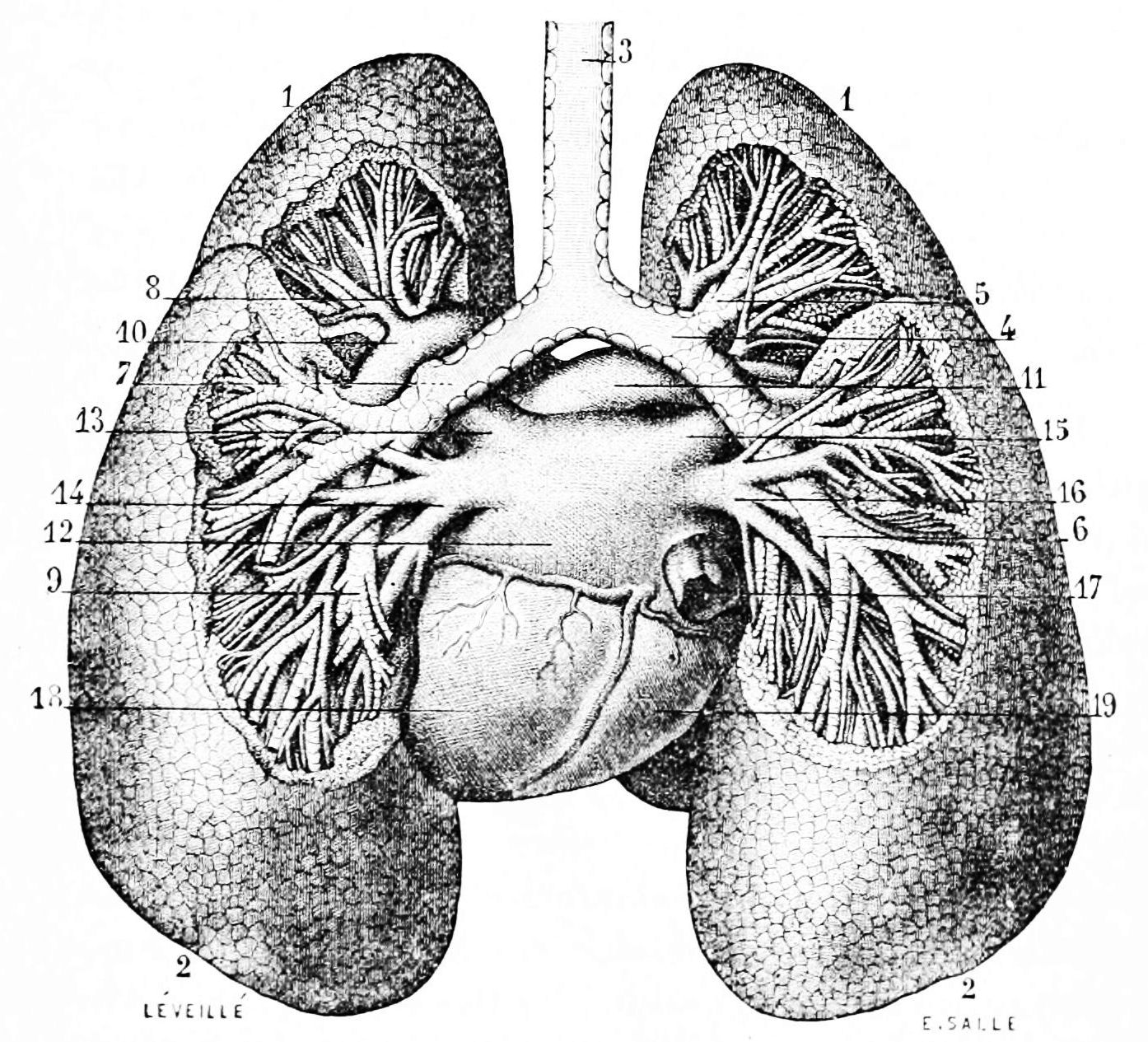
Alpha-1 antitrypsin deficiency is a rare, but potentially very serious, genetic disorder that mainly effects the lungs and liver. It occurs when a child gets defective AAT genes from their parents, which prevents their bodies from making enough of an important protein called the alpha-1 antitrypsin protein (AAT protein).
There are several different types of genetic mutations that can cause AAT deficiency, and some lead to more severe symptoms than others. Depending on their individual genes, a person with the disease can have different levels of AAT protein in their bodies, ranging from extremely low to only slightly lowered amounts.
Because of this, some cases of AAT deficiency are mild and don't cause many symptoms. Other cases can be very severe and lead to extensive lung damage, liver damage, and other complications.
People with severe AAT deficiency are prone to liver disease and cirrhosis as well as chronic lung infections, bronchitis, and emphysema. Because of this many people with the disease develop respiratory symptoms like wheezing and difficulty breathing as they get older.
Treatment for Alpha-1 antitrypsin deficiency depends on individual symptoms and the extent of damage to the liver and lungs. Most treatment plans focus on preventing organ damage by keeping the lungs and liver healthy, and avoiding irritants and toxinss that can damage them.
{{cta('b59df0c1-c4de-47a8-8e1c-0d33d4b414aa')}}
How Alpha-1 Antitrypsin Deficiency Affects Your Body
Alpha-1 Antitrypsin Deficiency can take many different forms, and every individual case of the disease is unique. How exactly the disease effects the body depends on the type of genetic mutation that caused it as well as age, lifestyle, and exposure to environmental irritants like dust and smoke.
Problems caused by AAT deficiency are all related to the body making a dysfunctional version of the AAT protein. This protein is made primarily in the liver, and in healthy people it moves easily out of the liver and into the bloodstream, where it is carried to the lungs
.

People with Alpha-1 make an abnormal version of the AAT protein that gets stuck in the liver instead of moving into the blood. That means it can't make it into to the lungs to protect them from inflammation and irritation, leaving the lungs vulnerable to damage.
The symptoms of Alpha-1 and how severe they get over time varies widely from person to person. Generally, the less AAT protein a person has in their bloodstream, the more susceptible they are to lung damage and other symptoms.
A large number of people with AAT deficiency eventually experience some level of lung decline, usually between the ages of 20 and 50. Lung damage is accumulative, and how frequently the lungs get inflamed by infections and irritants like dust and smoke has a major effect on the severity of respiratory symptoms and complications.
Although slightly less common, Alpha-1 can also cause liver damage and scarring (cirrhosis). This can occur in both adults and newborn babies with AAT deficiency, although doctors don't understand exactly why it affects some but not others.
The following sections will give you a more detailed understanding of how AAT deficiency causes lung and liver disease in people with Alpha-1.
How AAT Deficiency Affects the Lungs
The AAT protein's purpose is to break down a powerful, caustic enzyme called neutrophil elastase. This enzyme gets into the lungs via white blood cells—immune system cells that circulate in every person's bloodstream ready to fight pathogens and infection when needed.
White blood cells release neutrophil elastase in the lungs whenever the lungs get inflamed by infections or irritants. This enzyme helps white blood cells dissolve bacteria and fight off disease, but it can also break down sensitive lung tissues if it's not tightly controlled.
In healthy people, neutrophil elastase doesn't cause any problems because the AAT protein breaks it down quickly before it can damage the lungs. Unfortunately, people with Alpha-1 antitrypsin deficiency don't have enough AAT protein in their lungs or bloodstream, so the powerful enzyme is left to wreak havoc in their lungs.
Leftover neutrophil elastase damages the tiny air sacs, called alveoli, that allow the lungs to absorb oxygen. Over the span of years, the lung tissue gets so damaged and scarred that it can't get enough oxygen into the bloodstream, causing lung disease and a variety of other complications as it worsens.

The best way someone with AAT deficiency can prevent this from happening is by taking special precautions to avoid lung infections and irritants like smoke. It is also important to treat any respiratory illnesses that you do get quickly and aggressively. Even minor lung illnesses like the cold or flu can recur again and again, causing chronic inflammation that, over time, can cause permanent damage to the lungs.
Most people with AAT deficiency experience some amount respiratory decline as they get older and their lungs accumulate damage. In people with severe AAT protein deficiency, this can eventually lead to chronic emphysema, shortness of breath, and other respiratory complications.
How AAT Deficiency Affects the Liver

Liver problems are much less common in people with Alpha-1, but when they do occur they can be serious and life-threatening. About five to ten percent of newborn babies with AAT deficiency are born with liver disease, but it's unknown why some babies and adults with Alpha-1 get liver damage while others don't.
Doctors and researchers only have a limited understanding of how AAT deficiency damages the liver and causes cirrhosis (permanent scarring). What they do know is that people with Alpha-1 get large build-ups AAT protein in their livers, which can make them prone to liver disease and dysfunction.
This happens because people with Alpha-1 make an abnormal version of the AAT protein that cannot exit the liver the same way that functional AAT protein does in healthy people. As a result, not enough AAT protein makes it into the bloodstream where it is needed to go to the lungs and protect them from inflammation.
Only about 15 to 20 percent of people with severe AAT deficiency ever experience symptoms of liver disease. For those that do, medications are available to help manage the symptoms and liver transplant surgery may be an option for people who develop life-threatening problems.
Causes of Alpha-1 Antitrypsin Deficiency

Alpha-1 Antitrypsin deficiency is caused by a defect in the gene that tells the body how to make the AAT protein. As a result of this mutated gene, people with the disease make a defective version of the protein that gets stuck in their liver instead of entering the bloodstream like it's supposed to.
This can cause liver problems and makes the lungs prone to inflammation. Over time, lung tissue can become damaged and scarred and lead to emphysema, trouble breathing, and low levels of oxygen in the blood.
In order to get AAT deficiency, you have to inherit two defective AAT protein genes from your parents. There are a couple different types of AAT gene mutations, and some cause a more severe protein deficiency than others.
Alpha-1 is inherited via a pattern known as autosomal codominance, in a way similar to how blood types are passed down through generations. The image below illustrates how this genetic inheritance pattern works.

Here are the three major types of AAT gene mutations:
-
The Z mutation: People with this mutation have extremely low levels of AAT protein in their blood. This is the most common mutation that causes Alpha-1, and it can lead to severe symptoms and disease in people who inherit two copies of the Z gene (ZZ).
-
The S mutation: People with this mutation have moderately low levels of AAT protein in their blood. This is a less common mutation, and usually causes less severe symptoms. People with two copies of the mutation (SS) usually do not have any symptoms at all.
- The M mutation: This is the normal, healthy version of the AAT gene. People with two copies (MM) of this gene type have normal levels of AAT protein in their blood and do not have Alpha-1. People with one normal copy and one mutated copy (MZ or MS) are considered carriers of Alpha-1.
You need to have two of these mutated genes in order to develop an AAT protein deficiency. However, it is possible to get the disease from any combination of the different AAT-deficient mutations.
For example, you could have one gene with the Z mutation and one with the S mutation and only develop a mild form of the disease, or you could have two Z genes (ZZ, the most severe form of the disease) instead. However, since they only have a very mild protein deficiency, people with two S genes (SS) usually don't develop any symptoms or complications at all.
If you only inherit one defective gene, and one normal (M) gene, then that makes you a carrier of Alpha-1. You won't experience any symptoms, but there is a chance you could give AAT deficiency to your children if you have them with someone who is also a carrier of Alpha-1.
Key Facts about Alpha-1 Antitrypsin Deficiency

Alpha-1 deficiency affects about 1 in every 2,500 people in the US. Even more Americans are carriers of the disease—an estimated 19 million people.
If the disease is caught and managed early, many people with Alpha-1 live just as long as people without the disease. With proper treatment and a healthy lifestyle, people with AAT deficiency can live long, active, and healthy lives.
People with the most severe AAT protein deficiencies (such as those with two copies of the Z gene mutation) are the ones that are most likely to develop serious, life-shortening diseases like liver damage and emphysema.
Because Alpha-1 is a relatively rare disease, it's not one that doctors routinely screen their patients for. Many people discover that they have Alpha-1 after they first develop breathing issues or show symptoms of liver decline.
Because the respiratory symptoms associated with AAT deficiency are so similar to other lung conditions, it's common for doctors to confuse the symptoms with asthma or smoking-induced emphysema. Fortunately, all it takes is a simple blood test to determine whether or not you have Alpha-1 deficiency.
Since so many people with Alpha-1 are misdiagnosed with other lung conditions first, medical professionals recommend that anyone diagnosed with a lung or liver disease get tested for AAT deficiency. Detecting the disease as early as possible is key for slowing or preventing further damage.
Unfortunately, researchers estimate that up to three percent of people living with COPD have undiagnosed Alpha-1 deficiency.
Alpha-1 Antitrypsin Deficiency Symptoms

The main symptoms of Alpha-1 include respiratory symptoms like coughing, shortness of breath, and frequent respiratory illnesses. Signs of liver disease, like yellow-tinted skin and eyes, are slightly less common but can be an important early indicator of AAT deficiency.
Every case of Alpha-1 is different, and how the disease affects you depends on how severe your AAT deficiency is and a variety of other factors. Some people with Alpha-1 are born with liver disease, while others develop liver damage later in life, or not at all.
Your individual lifestyle and how careful you are to avoid respiratory toxins and other irritants can play a major role in what symptoms you develop and how severe they become. If you have Alpha-1, you should have frequent visits with your doctor to check for signs of liver and lung damage so you can treat it as early as possible.
If you have AAT deficiency, it is especially important for you to protect your lungs from smoke, infections, and anything else that could cause damage or inflammation. You should also take care to protect your liver to avoid developing symptoms of liver dysfunction.
While some people with Alpha-1 develop organ damage early in life, many others don't notice any symptoms until they are much older. The first symptoms of AAT deficiency can appear as late as fifty or sixty years old.
Common Respiratory Symptoms for Alpha-1
- Shortness of breath and difficulty breathing, especially during physical activity
- Cough, often with phlegm
- Wheezing, especially during exertion
- Frequent respiratory illnesses and infections (e.g. recurring colds)
- Chronic allergies that last all year
Common Liver-Related Symptoms for Alpha-1
- Jaundice (yellowing of the skin and eyes) that can be present at birth or occur later in life
- Frequent itching
- Pale colored stools or blood in stools
- Dark urine
- Fatigue
- Swelling in the abdomen (ascites)
- Swollen, enlarged liver (hepatomegaly) or spleen
Panniculitis is another possible symptom of AAT deficiency. It is a very rare skin condition that causes raised, painful bumps (nodules) or ulcers on the skin.
Complications with Alpha-1 Antitrypsin Deficiency
Liver Disease

Low levels of AAT protein in the blood of people with Alpha-1 occurs because they make a version of the protein that won't leave the liver. As a result, it can't make it into the bloodstream where it's needed and instead builds up in the liver, leaving it prone to inflammation and disease.
Doctors and researchers aren't sure exactly how the buildup of AAT in the liver causes damage in some people with Alpha-1 but not others. However, they do know that, in rare cases, it can cause cirrhosis and serious damage that leads to liver disease over time.
Only a small number of people with Alpha-1 develop liver problems, but all people with AAT deficiency should take precautions to protect their liver from damage. Alcohol, viruses like Hepatitis A and B, and certain medications like acetaminophen can be especially dangerous for people with Alpha-1.
Emphysema
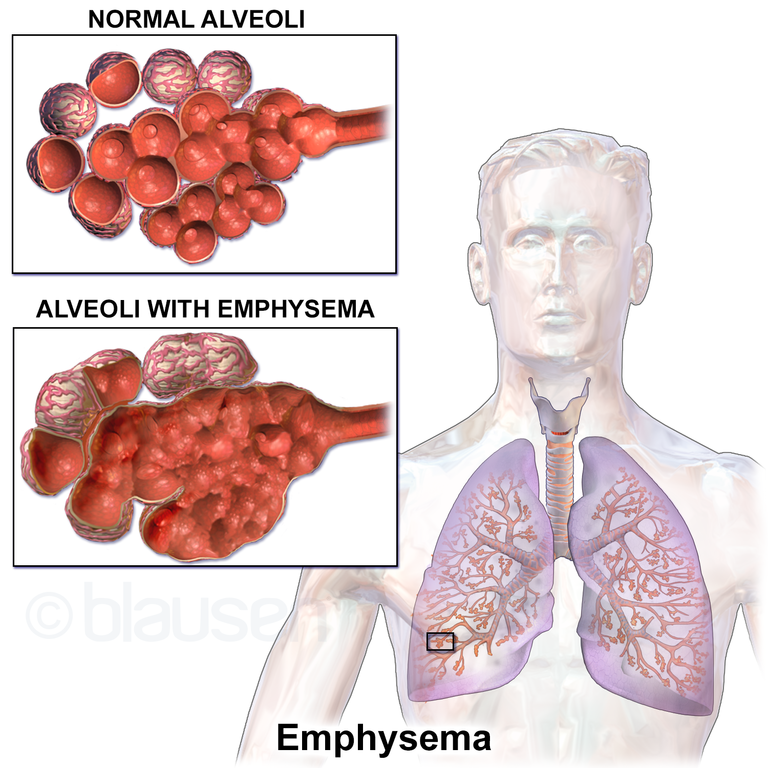
If you have Alpha-1, your lungs are prone to repeated inflammation and infection that can permanently damage delicate lung tissue over time. Because of this, many people with AAT deficiency experience some sort of lung and breathing issues as they get older, and some develop a more serious lung disease called emphysema.
Emphysema is a type of chronic obstructive pulmonary disease (COPD) that occurs when irritants, infections, or inflammation damages the tiny air sacs, or alveoli, in your lungs. This makes it difficult for your lungs to absorb oxygen and causes shortness of breath, wheezing, coughing, and other respiratory symptoms.
Damage to tissues in the lungs and small airways also makes it difficult to move air through the lungs. Unlike healthy, elastic lung tissue, damaged tissues lose their springiness and get stiff. This causes small airways to collapse, blocking air from flowing through and making it difficult to push all the air out of your lungs when you exhale.
Emphysema is an progressive lung disease with no known cure. That means there's no way to stop it from continuing to cause more and more lung damage over time, although medications and lifestyle changes can slow how quickly the disease worsens.
Exposure to toxins and other respiratory conditions can cause emphysema, but when emphysema is caused by AAT deficiency it is often referred to as Alpha-1 COPD. People with Alpha-1 tend to develop emphysema much earlier (by ten years or so) than “healthy” people who acquire it by smoking or exposure to other toxins.
{{cta('43b79c5e-6bd6-4f02-ac27-2d038d20c146','justifycenter')}}
Panniculitis
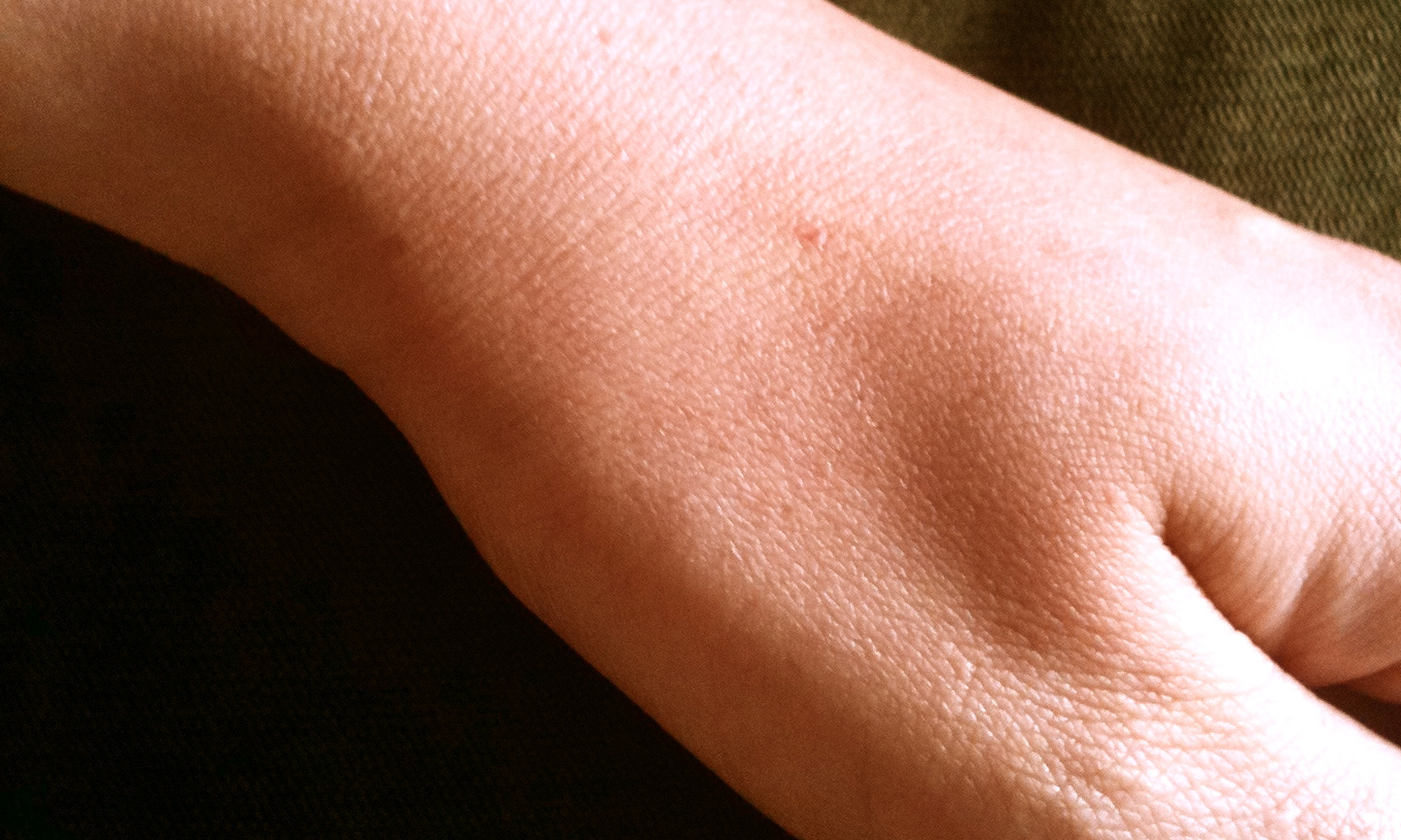
Panniculits is a rare skin condition that a small percentage of people with AAT deficiency develop. It happens when the layers of skin just under the surface get irritated and cause rash-like raised, red bumps (called nodules) on the skin.
Panniculitis often develops in patches on the thighs and buttocks and any part of the skin that sustains damage. It often only takes minor injury or abrasion to cause nodules to form, which can happen during vigorous physical activity.
The severity of symptoms varies from person to person, ranging from minor irritation to severe pain and discomfort. In the worst cases, panniculitis nodules can turn into more serious skin ulcers, known as necrotizing panniculitis.
Fortunately, panniculitis is extremely rare, even in people with Alpha-1, and can often be treated with medications like corticosteroids, antibiotics, and augmentation therapy (described later in the section on treatments for Alpha-1).
Risk Factors for Alpha-1 Antitrypsin Deficiency

Since Alpha-1 is a genetic disorder, you can only get the disease is if you inherit two of the defective AAT protein genes from your parents. Unfortunately, there's nothing you can do to change your genetics if you get the disease, but a healthy lifestyle and medical treatment can have a major effect on how severe symptoms get over time.
People with Alpha-1 who smoke or are exposed to workplace hazards like dust, pollen, mold, and chemical fumes, are much more likely to develop respiratory problems and emphysema that those who aren't. People who have asthma, a family history of emphysema, or get repeated lung illnesses are also more likely to experience complications with AAT deficiency.
Alpha-1 is most common in white people of European and Middle Eastern descent, where up to 1 in 32 people are carriers of the disease. It is much less common in people with Asian and African ancestry.
Treatment for Alpha-1 Antitrypsin Deficiency

Treatments and medications for Alpha-1 antitrypsin deficiency are mostly aimed at preventing progressive organ damage and managing uncomfortable symptoms. The key focus is prevention, because lung damage and liver cirrhosis caused by AAT deficiency is permanent.
People with Alpha-1 usually need frequent medical checkups, a strict healthy lifestyle, and medication to protect their liver and lung function from declining. There is also a special treatment available, known as augmentation therapy, that can treat the underlying protein deficiency in people who have Alpha-1.
Lifestyle Habits to Treat Alpha-1 Antitrypsin Deficiency
Living a healthy lifestyle is an important part of preventing organ damage in people with AAT deficiency. This includes healthy eating, regular exercise, and avoiding substances that are toxic to liver and lungs.
Healthy Diet & Nutrition
Eating healthy, wholesome foods is an important part of any healthy lifestyle, but it's especially important for people with AAT deficiency. A balanced diet ensures that your liver and lungs have all the nutrients they need to stay healthy and work as efficiently as possible.
A healthy diet and portion control will also help you maintain a healthy BMI and avoid health issues like diabetes and heart disease. If you develop liver damage as a result of AAT deficiency, your doctor might recommend a special diet or supplements to help your liver function better.
Vaccinations

There are several vaccinations that are especially vital for people with Alpha-1 deficiency. These include the hepatitis A and B vaccines, the pneumococcal vaccine, and yearly flu shots.
The pneumococcal vaccine helps prevent pneumonia, a serious lung condition that is even more serious for people prone to lung damage and disease. Yearly flu shots are also important to protect the lungs against the influenza virus.
Getting vaccinated against hepatitis A and B protects the liver from deadly viruses that can cause liver damage and cirrhosis. Since people with Alpha-1are particularly prone to liver damage, this is an important precaution to take against liver disease.
Avoid Lung Irritants and Alcohol

If you have Alpha-1, quitting smoking is by far the most important thing you can do to increase your lifespan and prevent lung damage. Even minor lung irritation from secondhand smoke, dust, or mold can cause serious damage over time.
AAT deficiency also makes your liver prone to getting damaged, which is why doctors recommend that people with Alpha-1 avoid drinking alcohol. Excessive alcohol use can cause cirrhosis even in people who don't have the disease.
Here are some common respiratory irritants you should take care to avoid:
- Smoke, including secondhand smoke, from any source (campfires, wood burning stoves, incense, cigarettes, etc.)
- Chemical fumes


 So we can find the best portable oxygen concentrator for your needs!
So we can find the best portable oxygen concentrator for your needs!
















